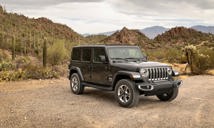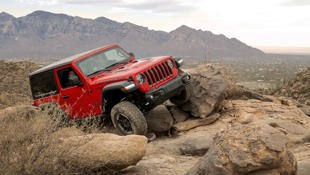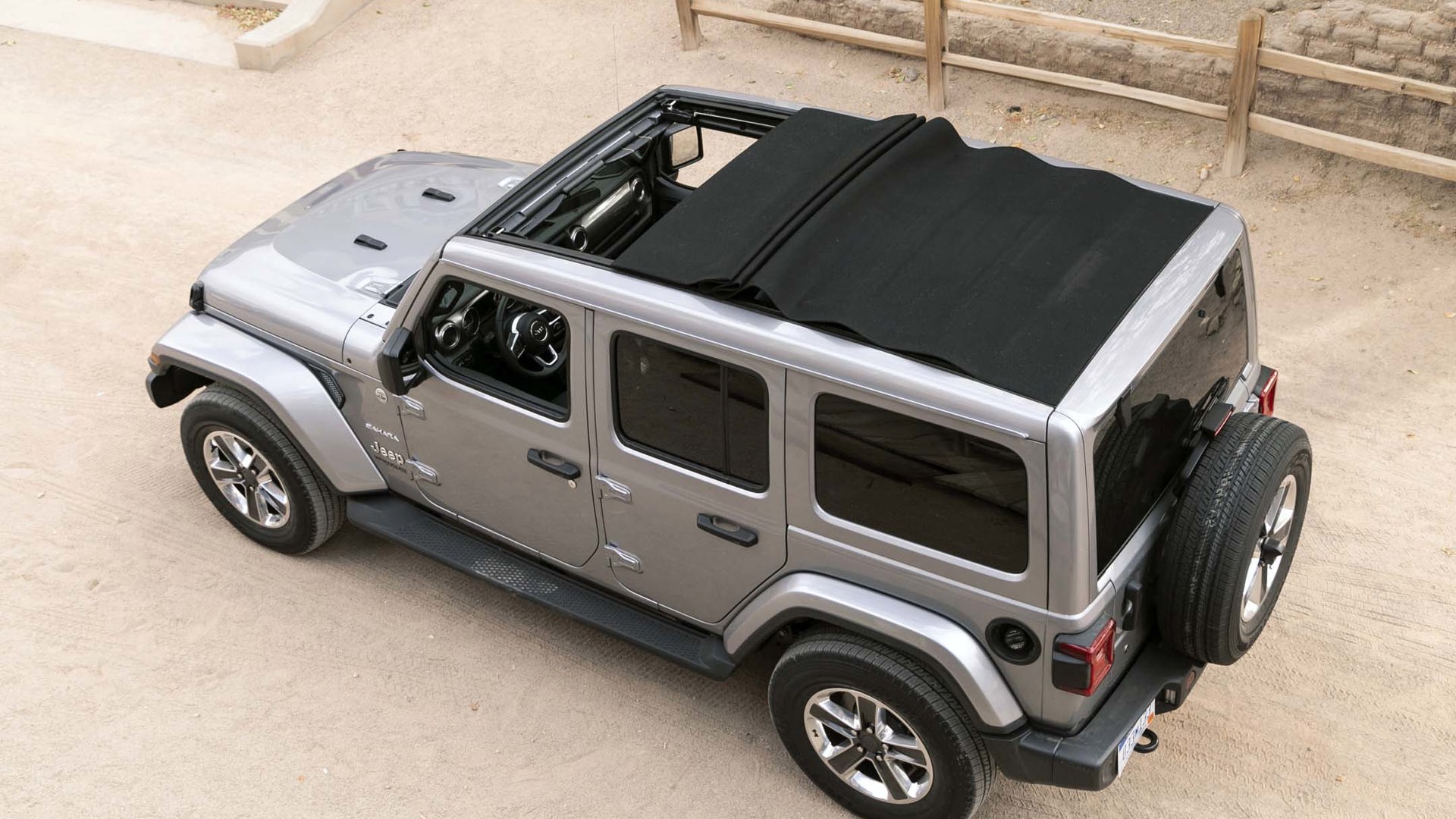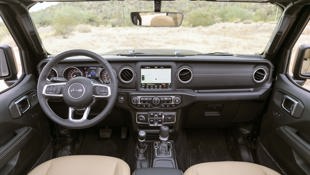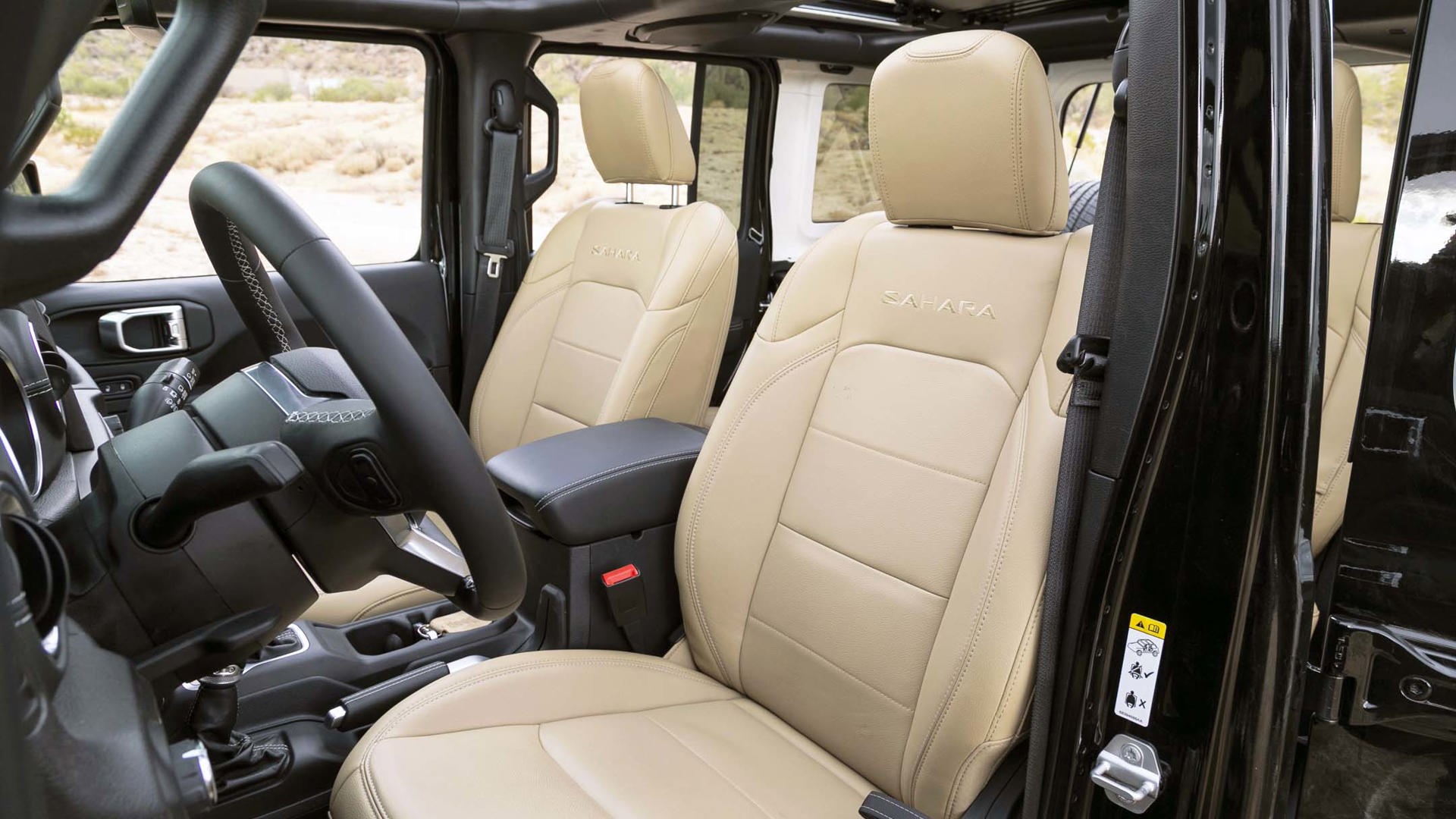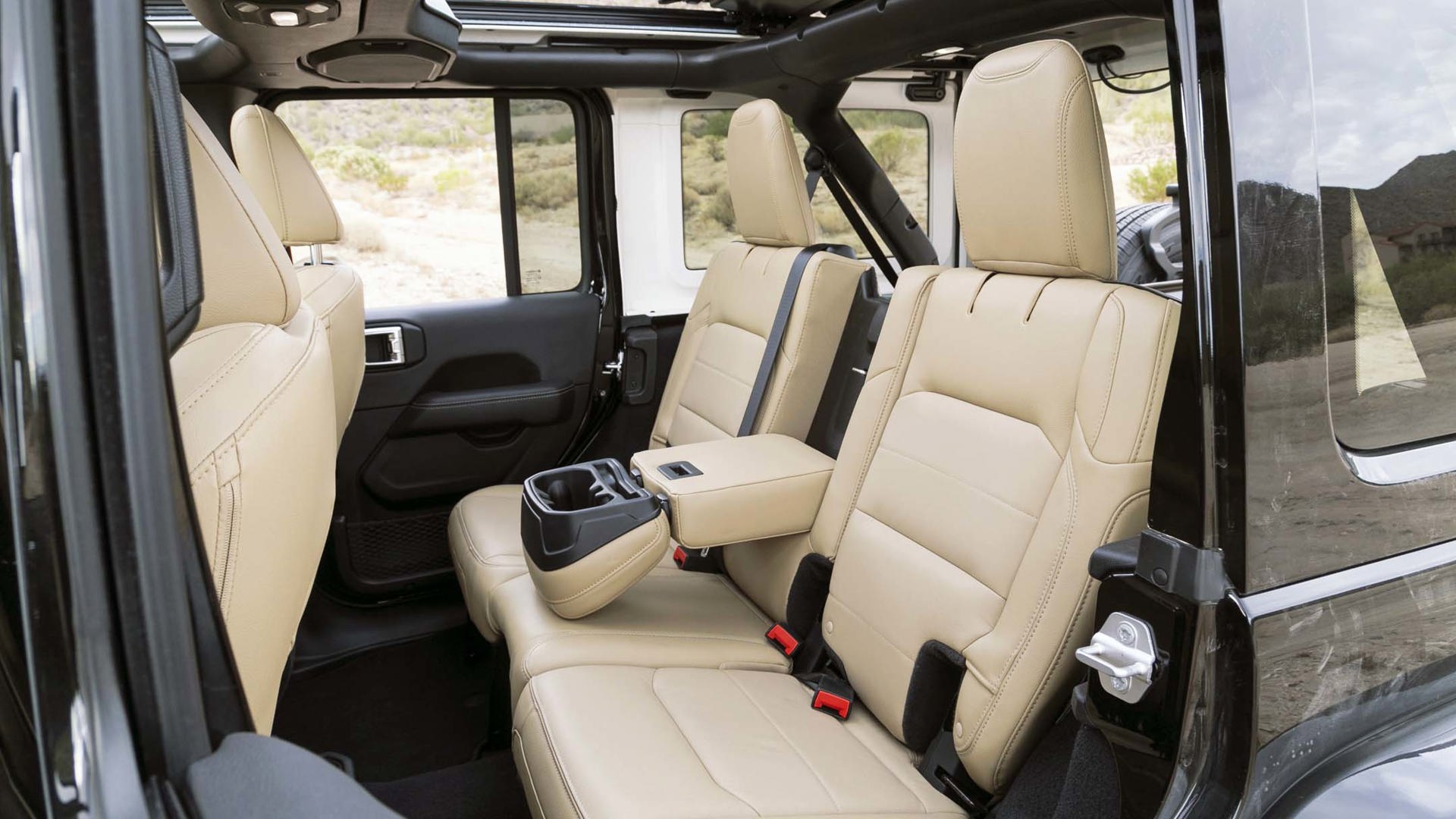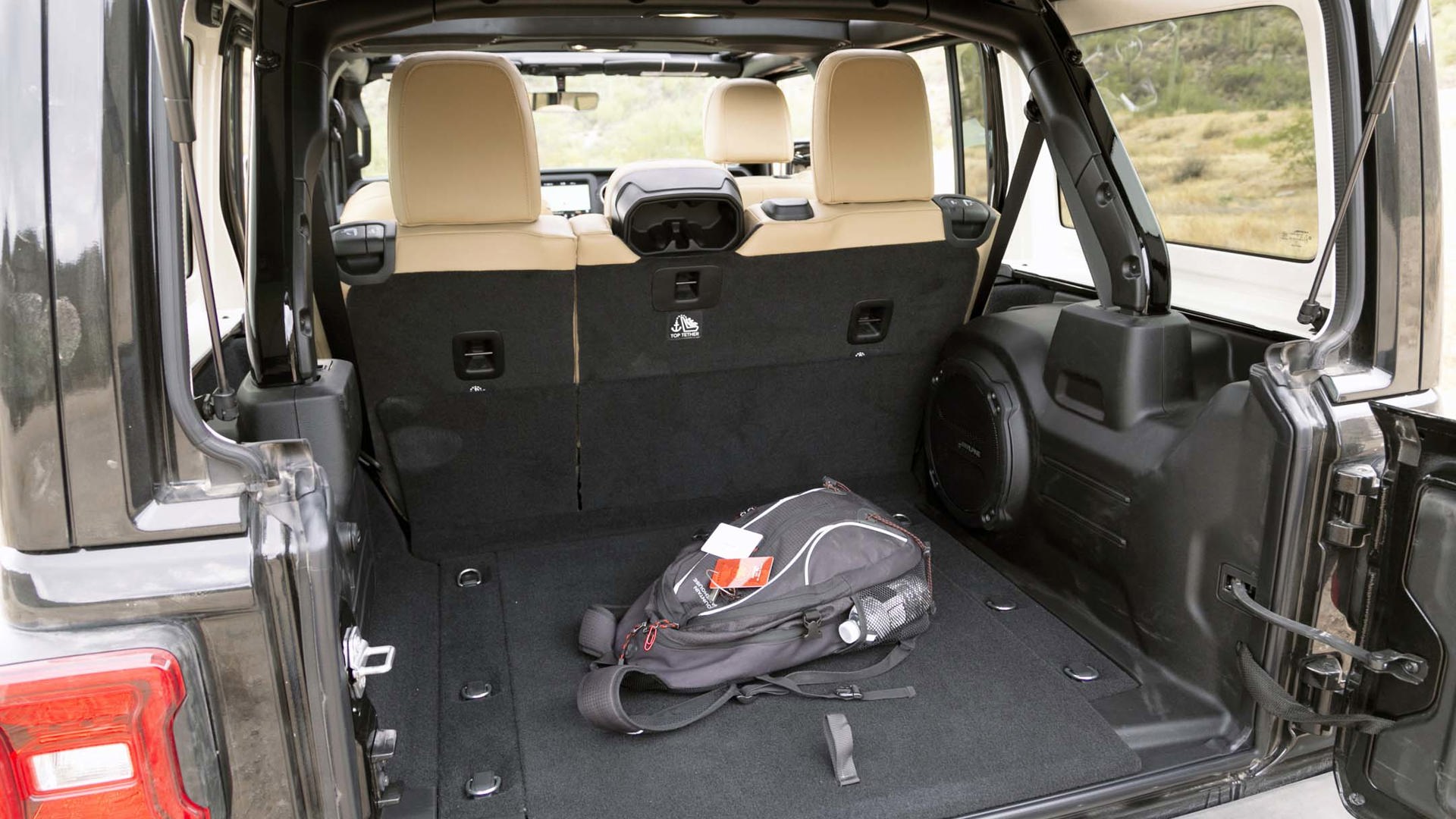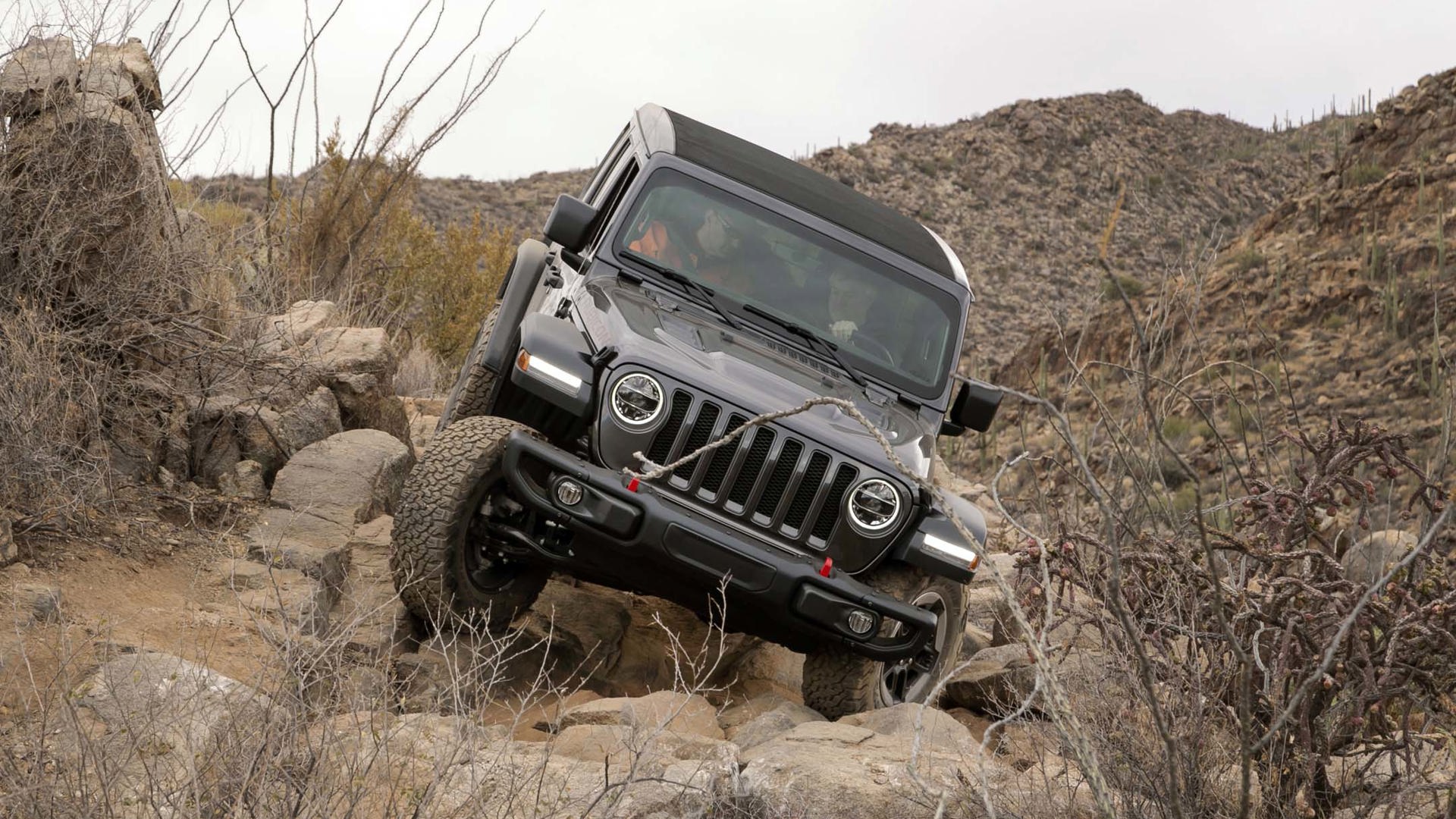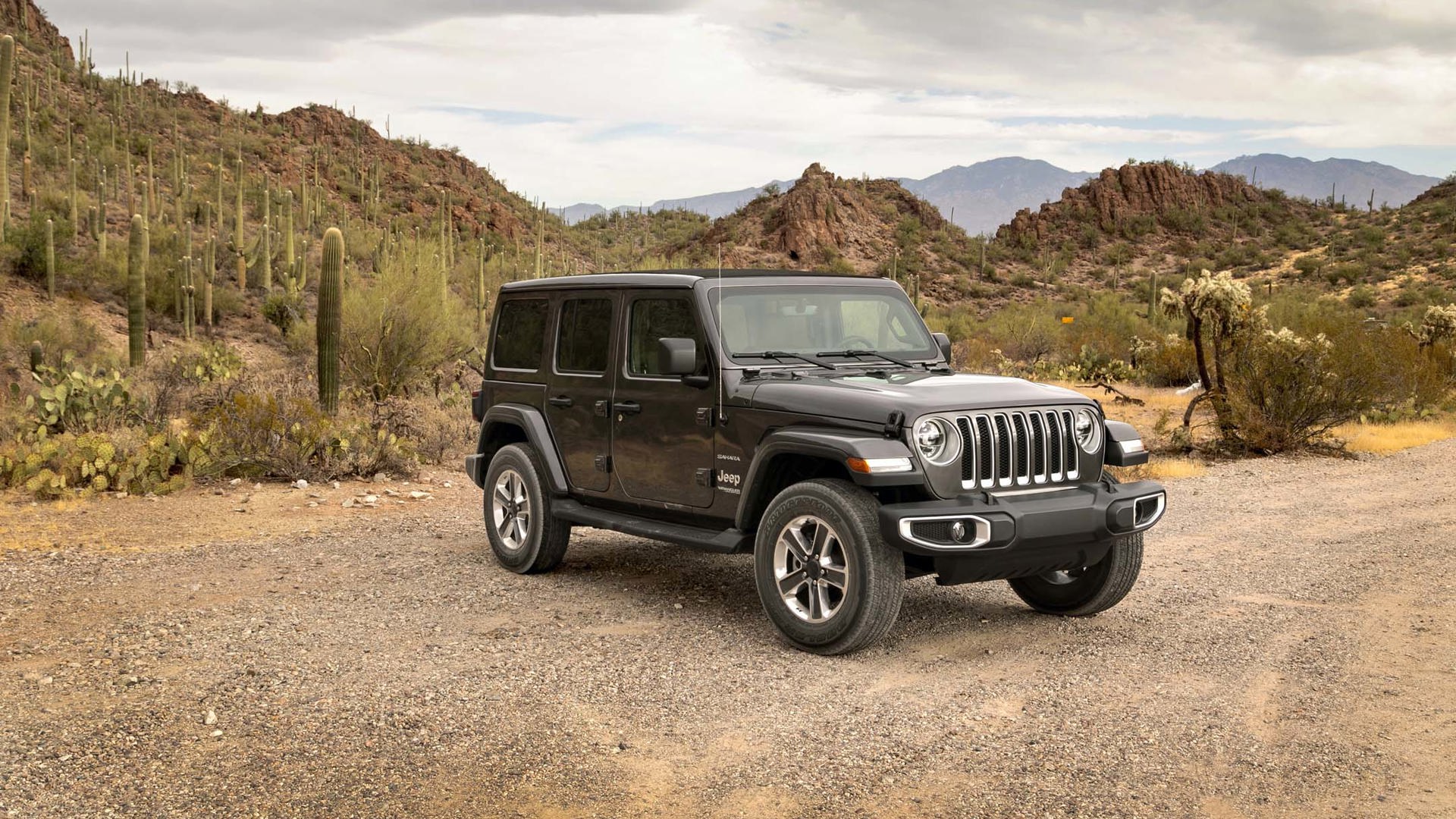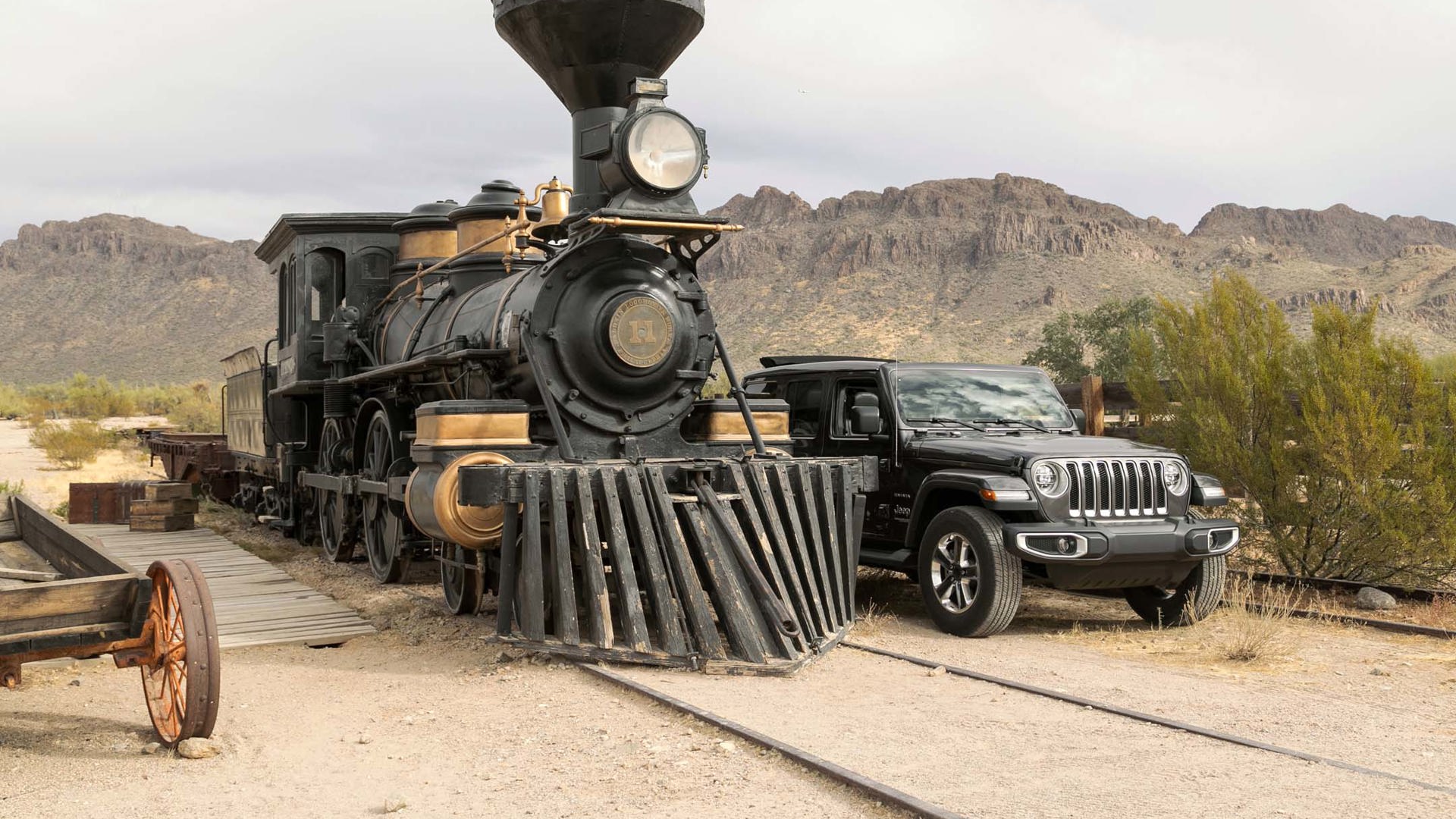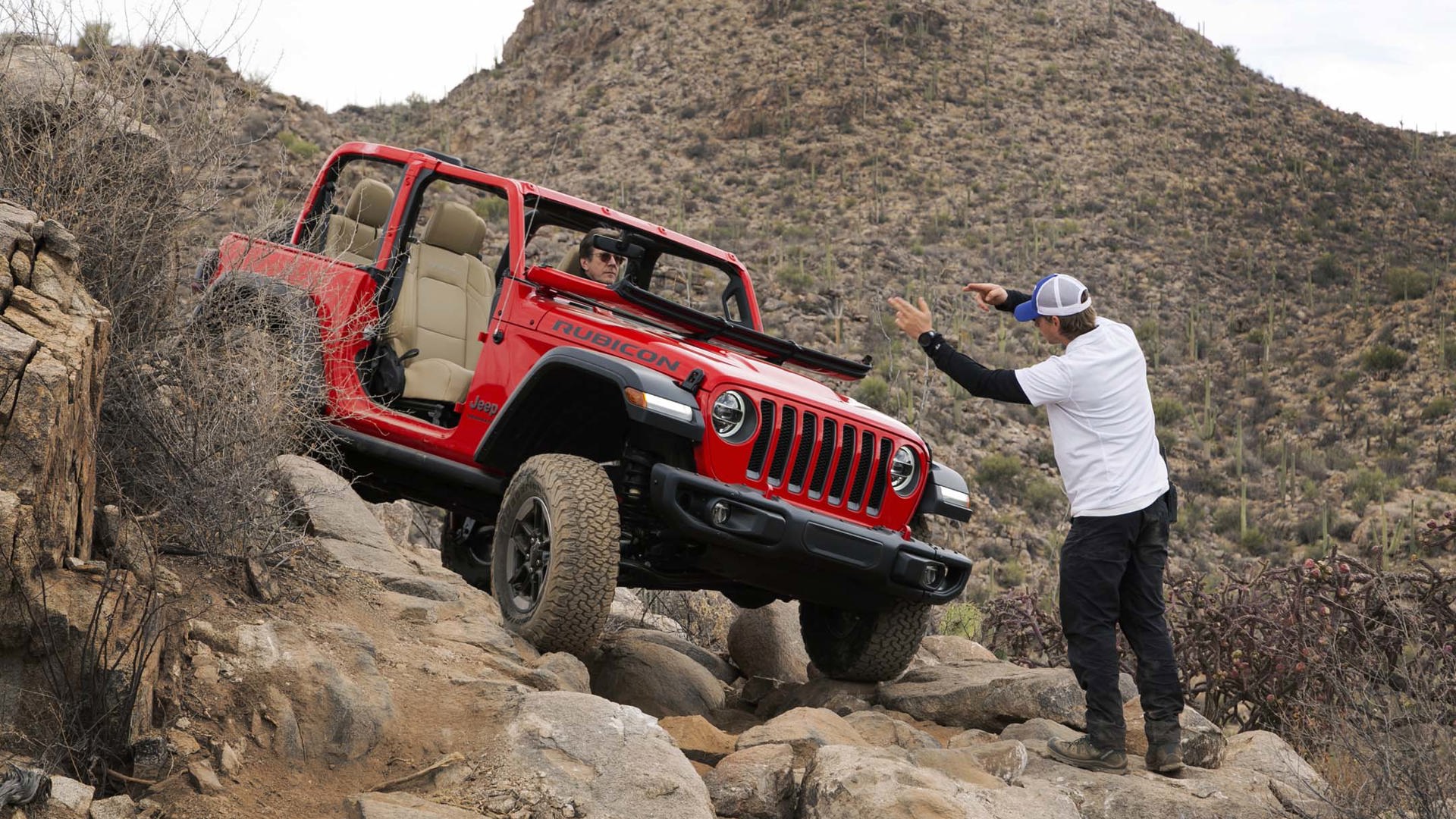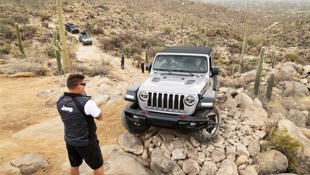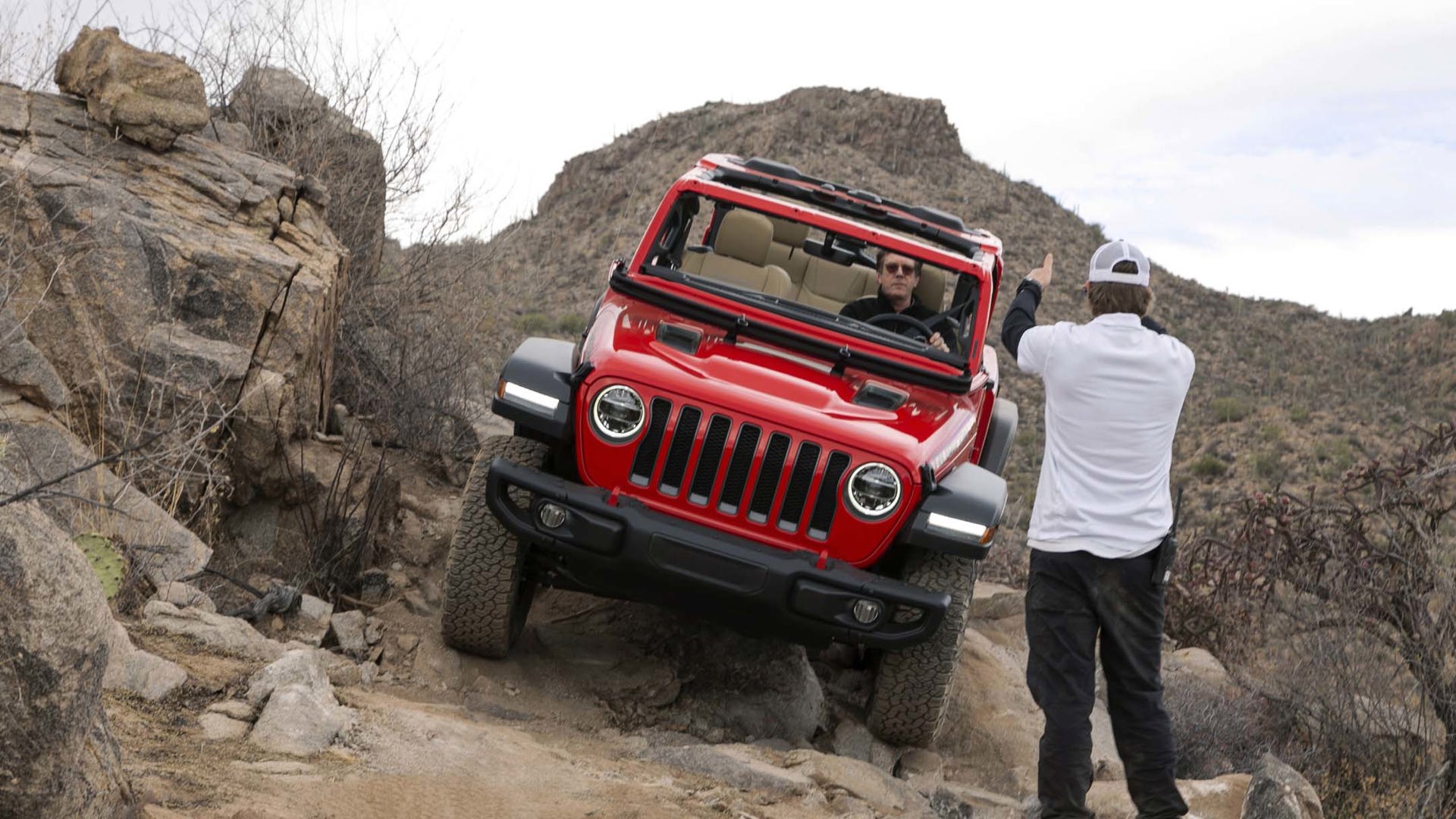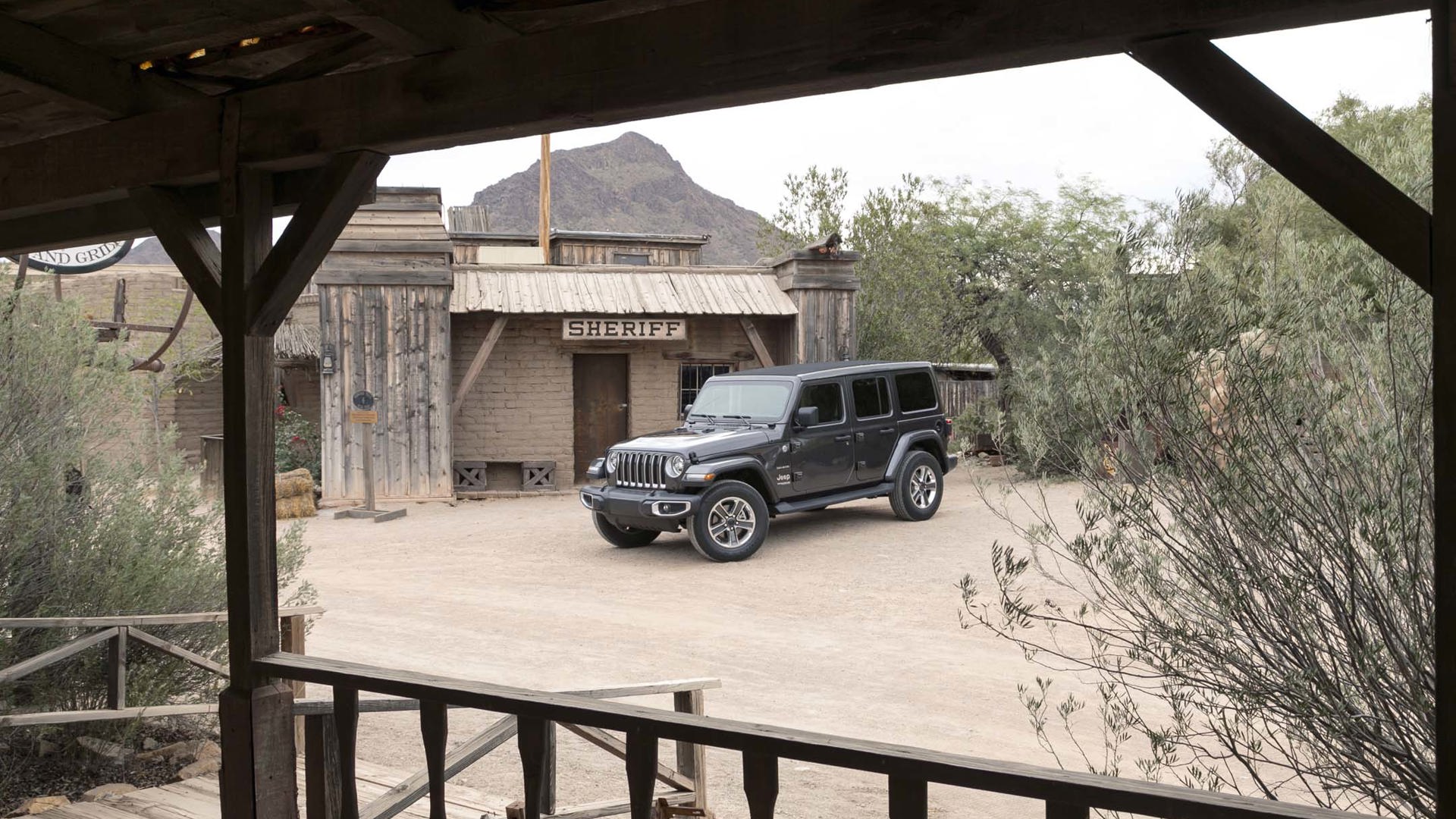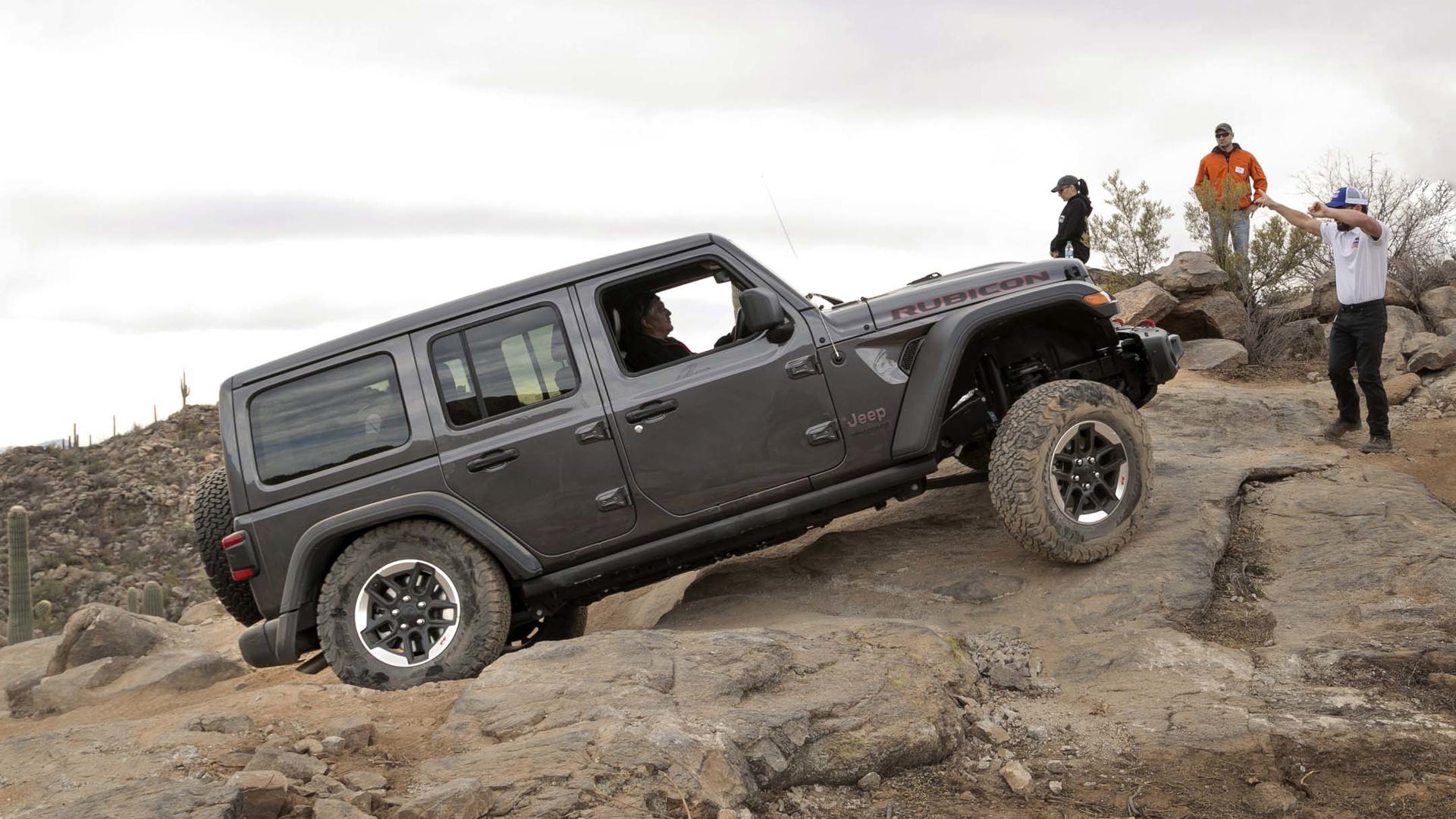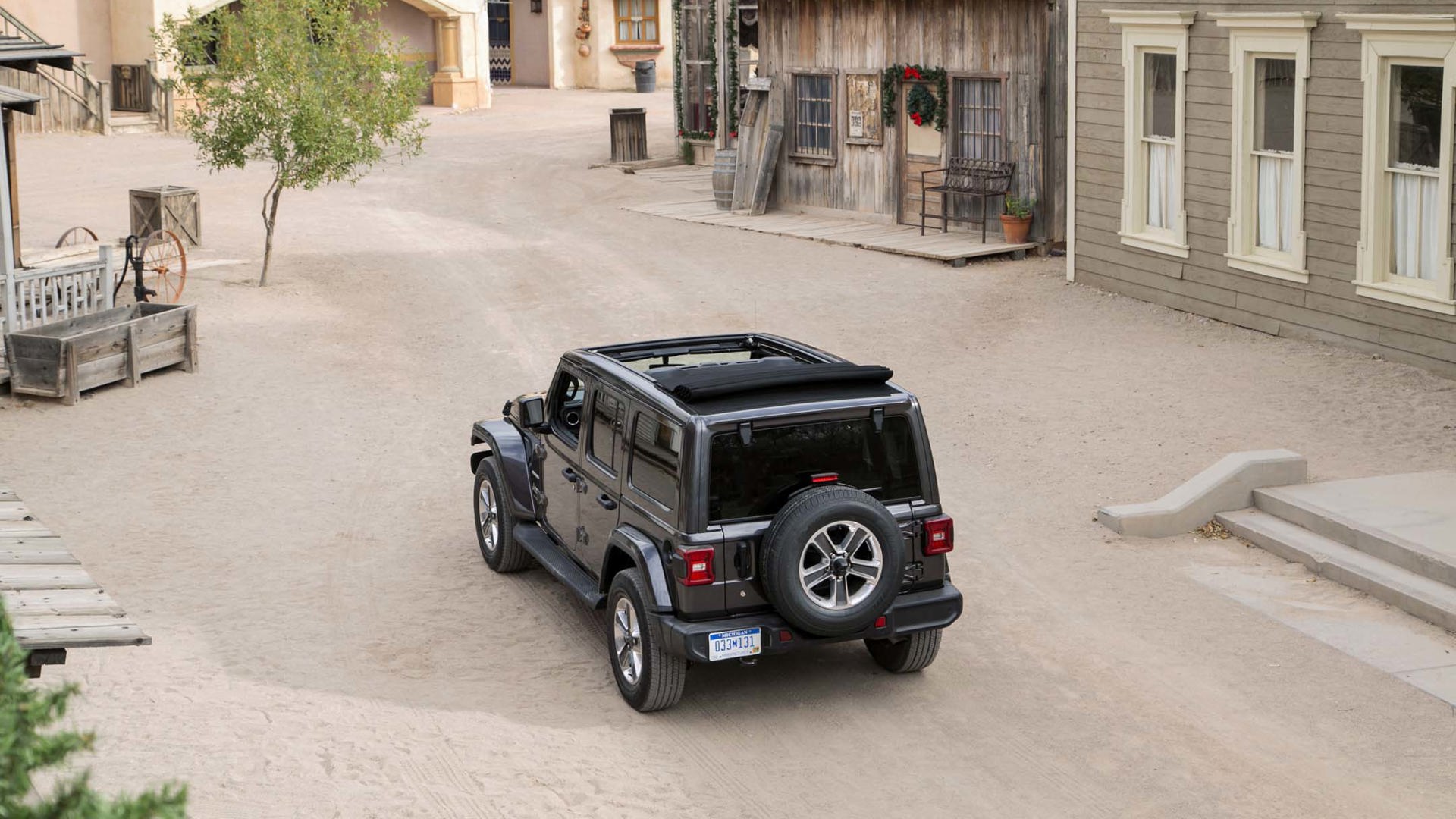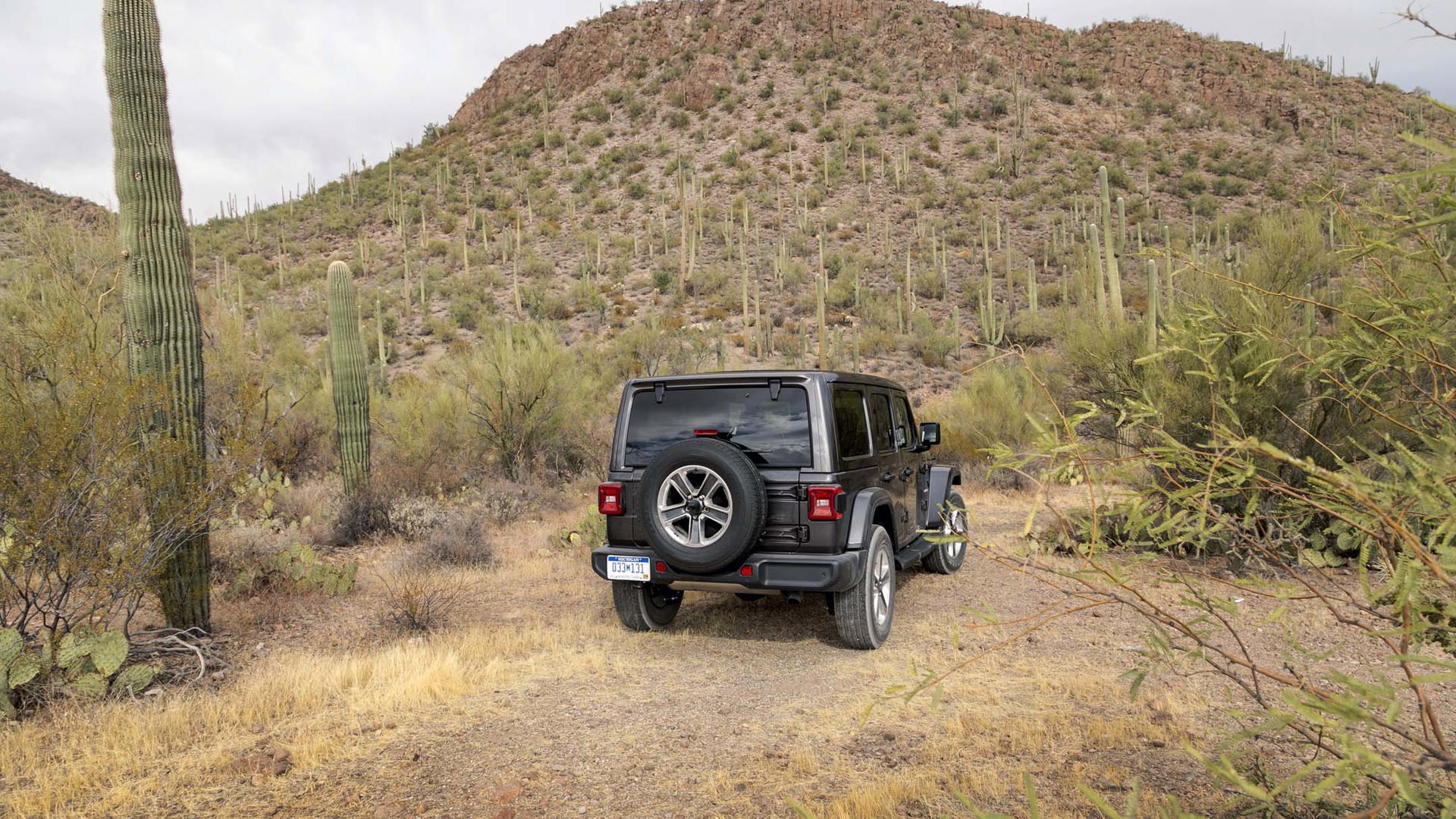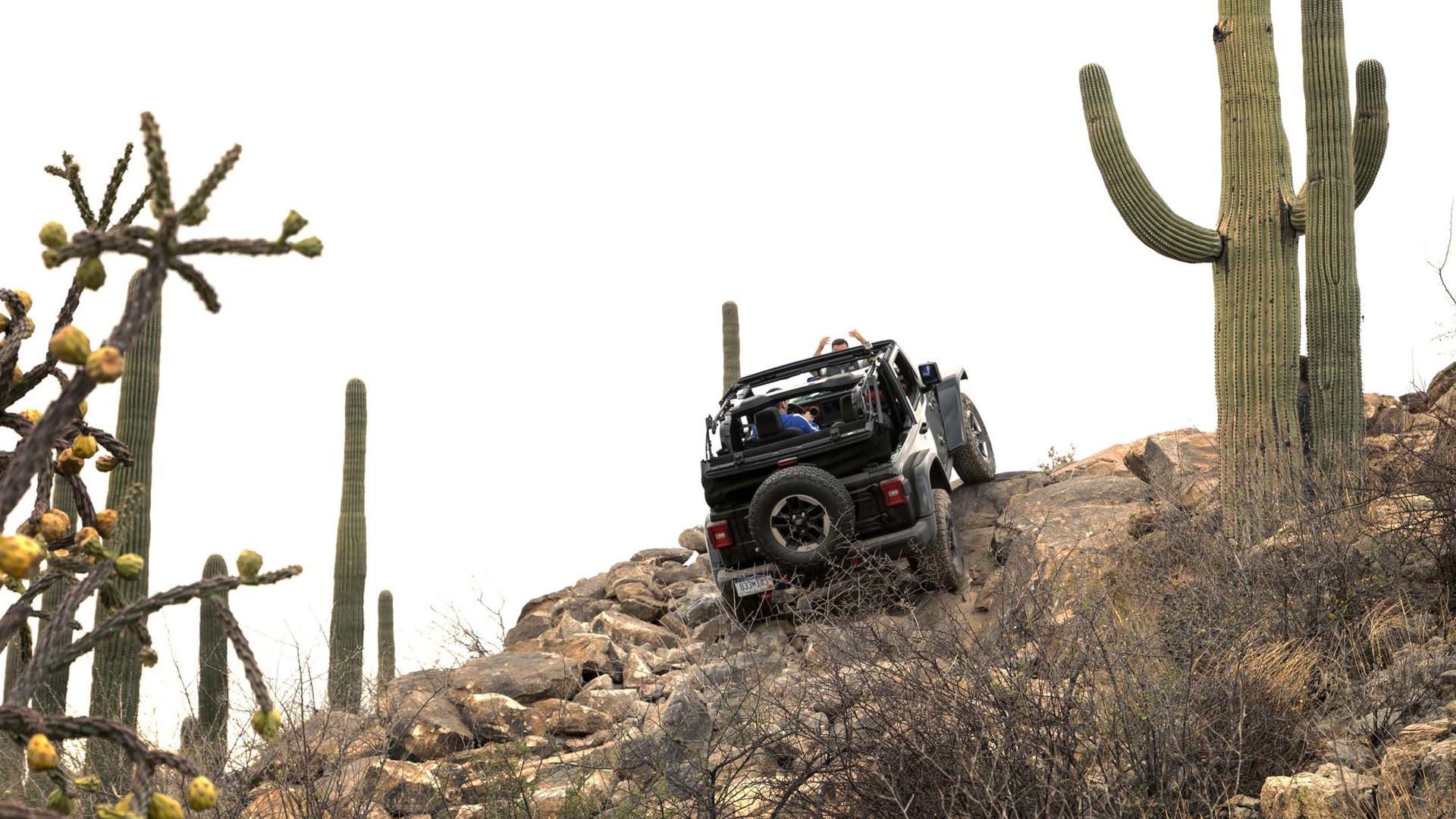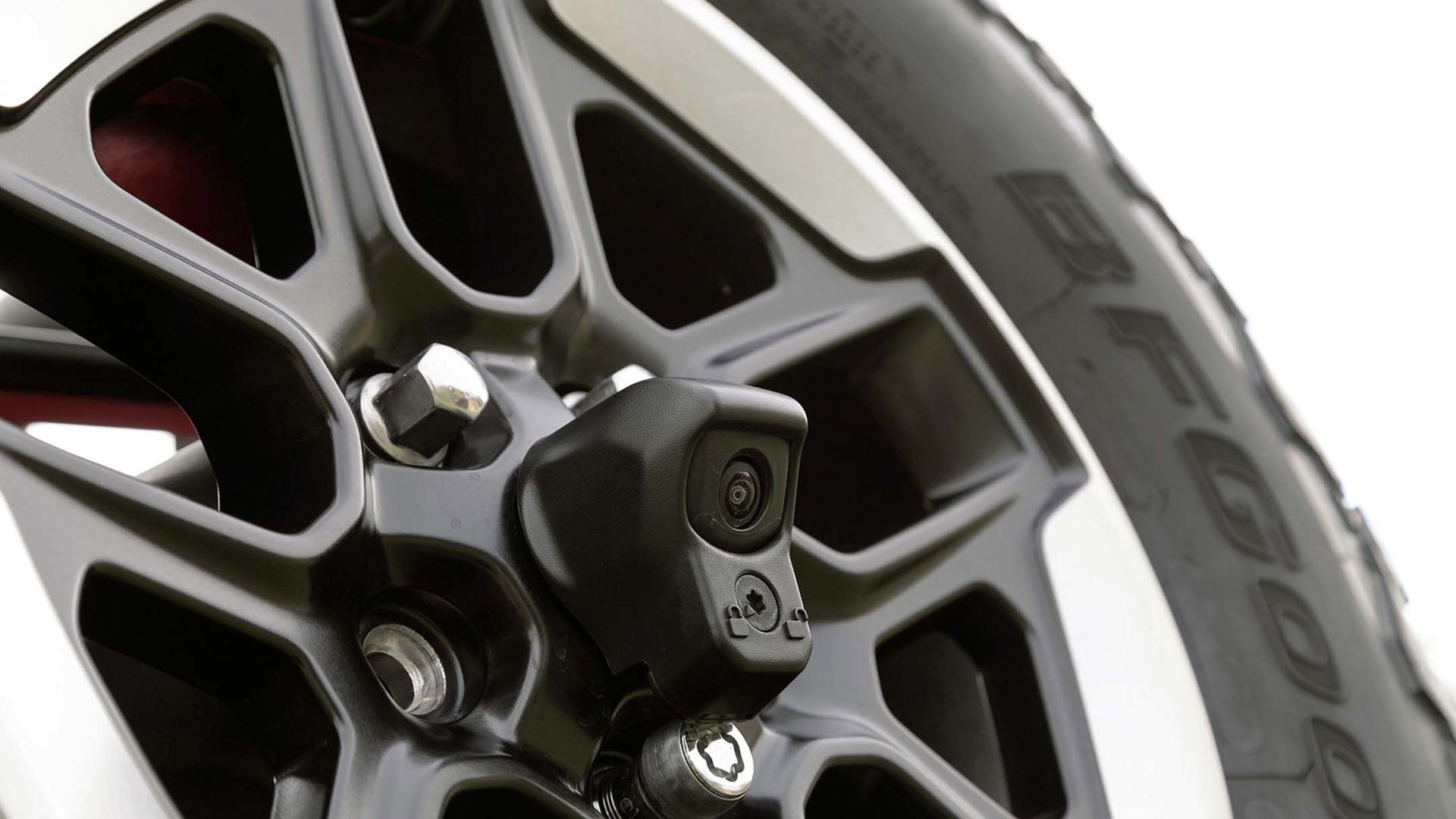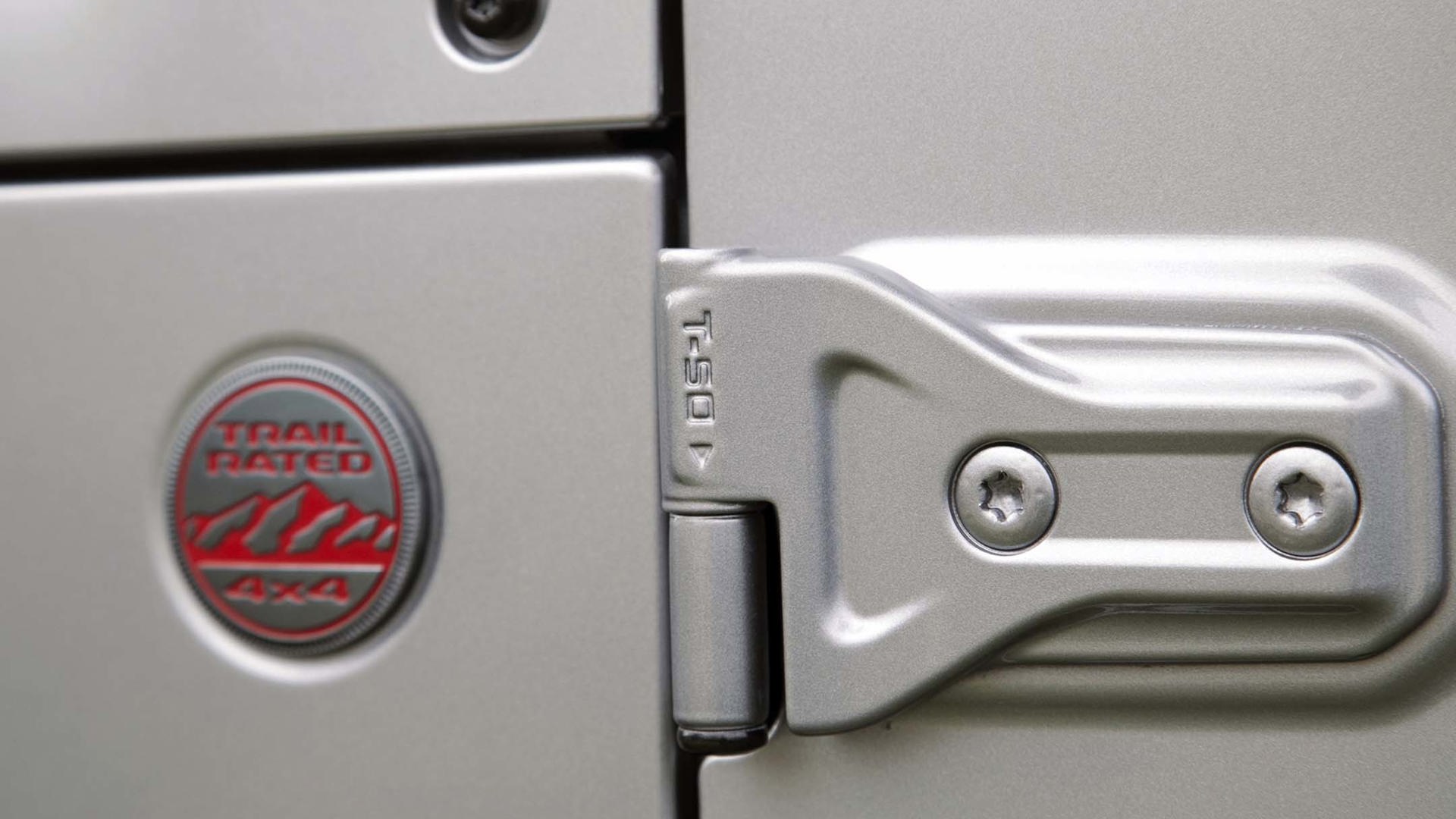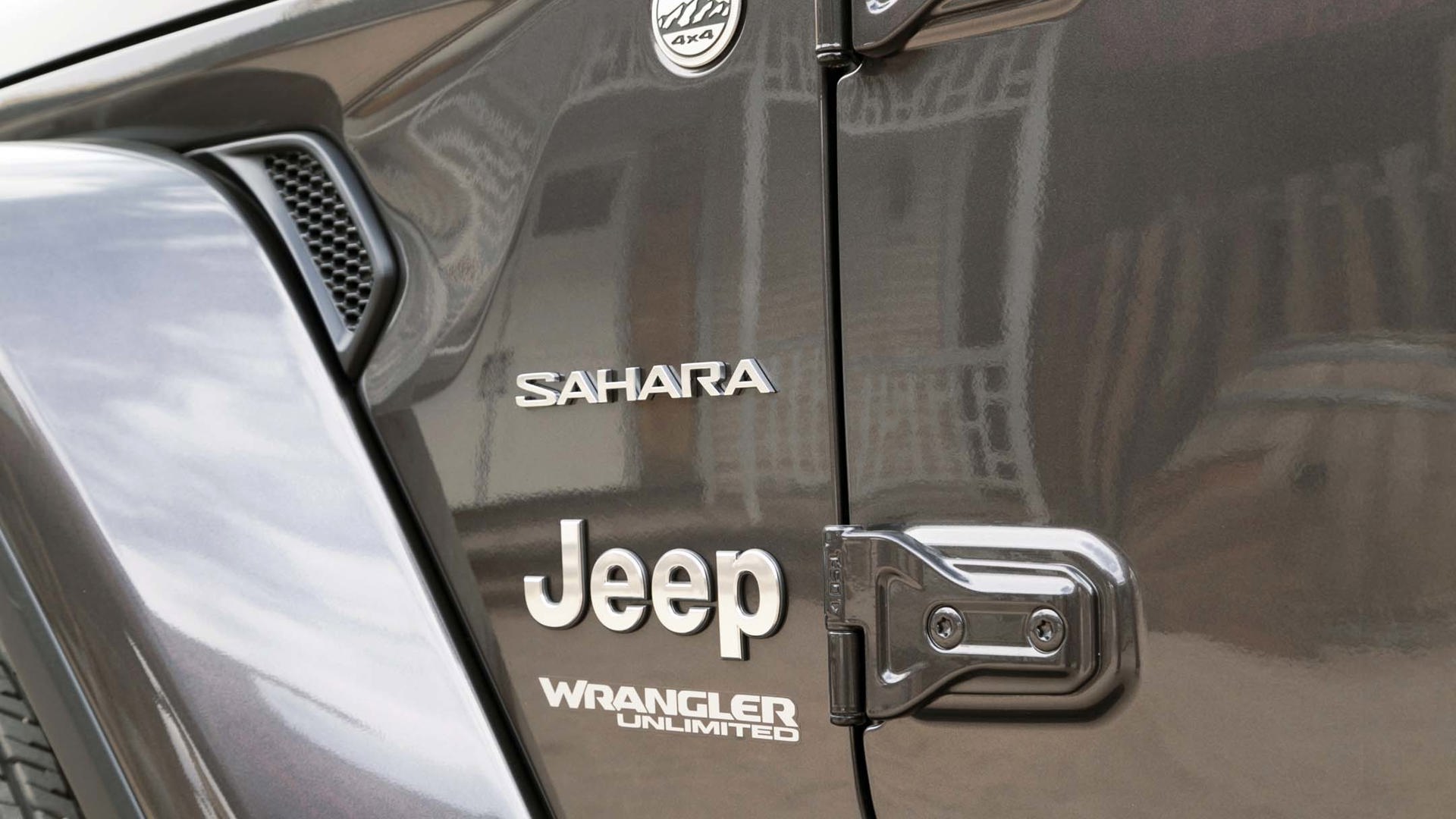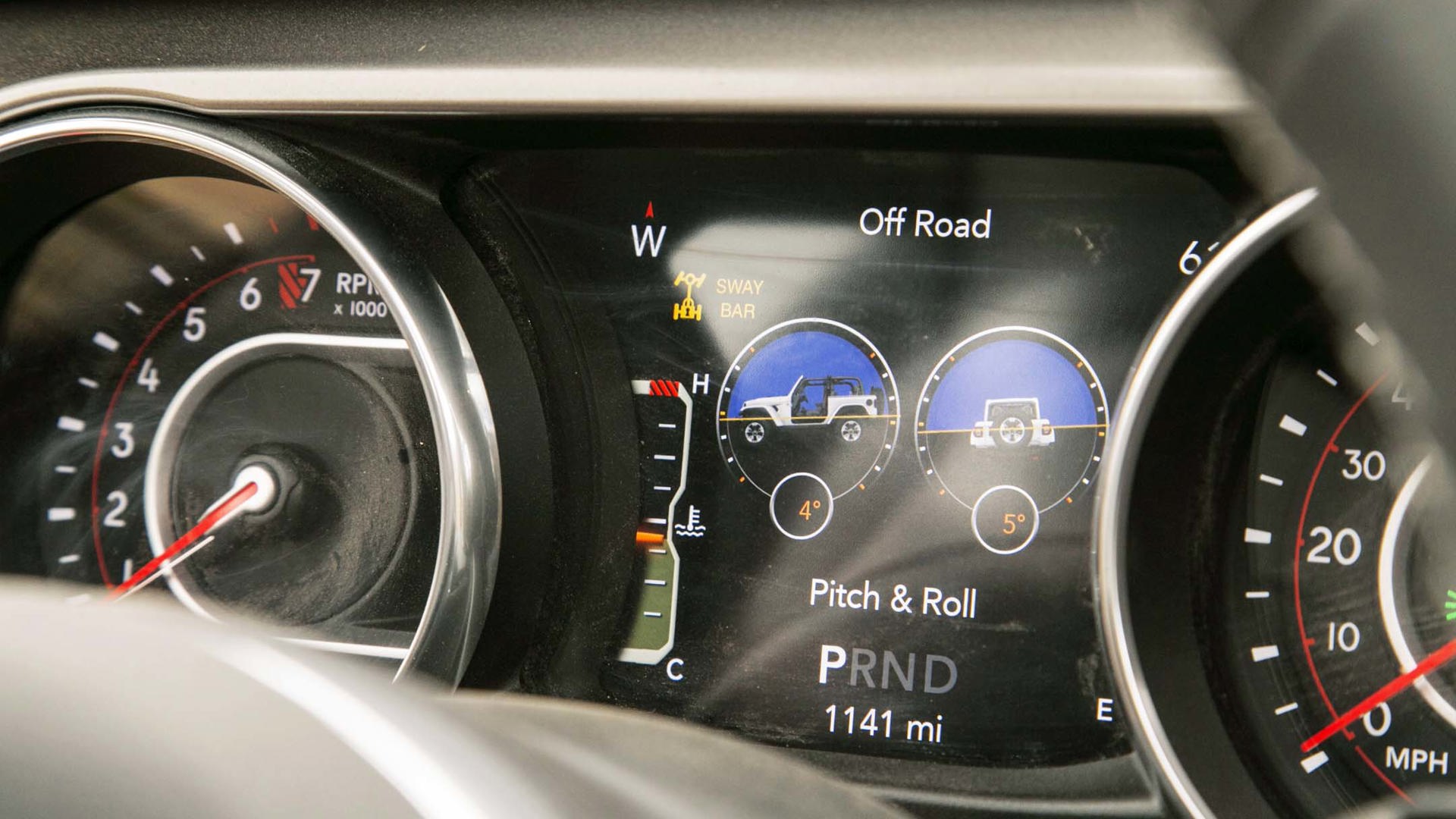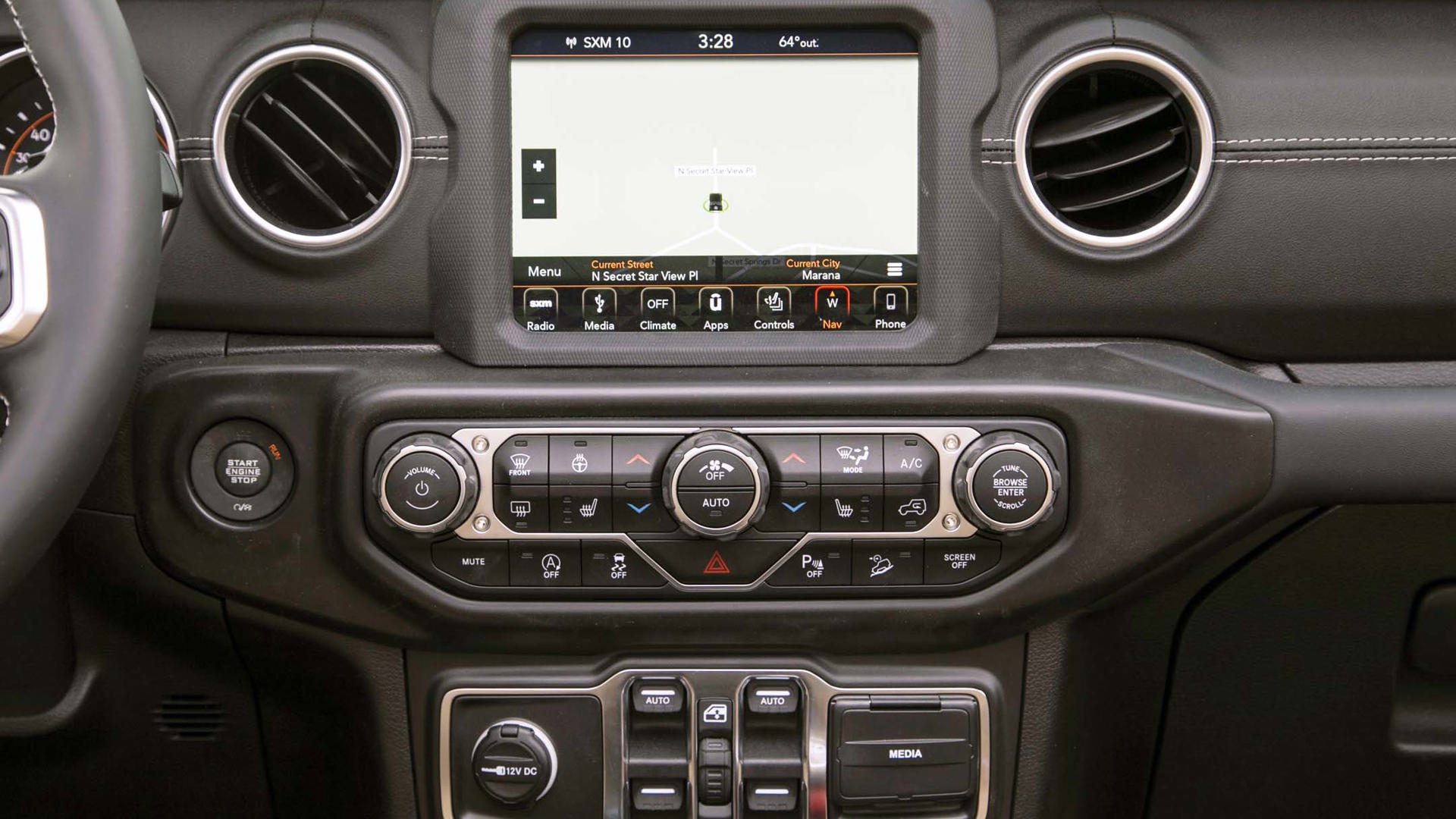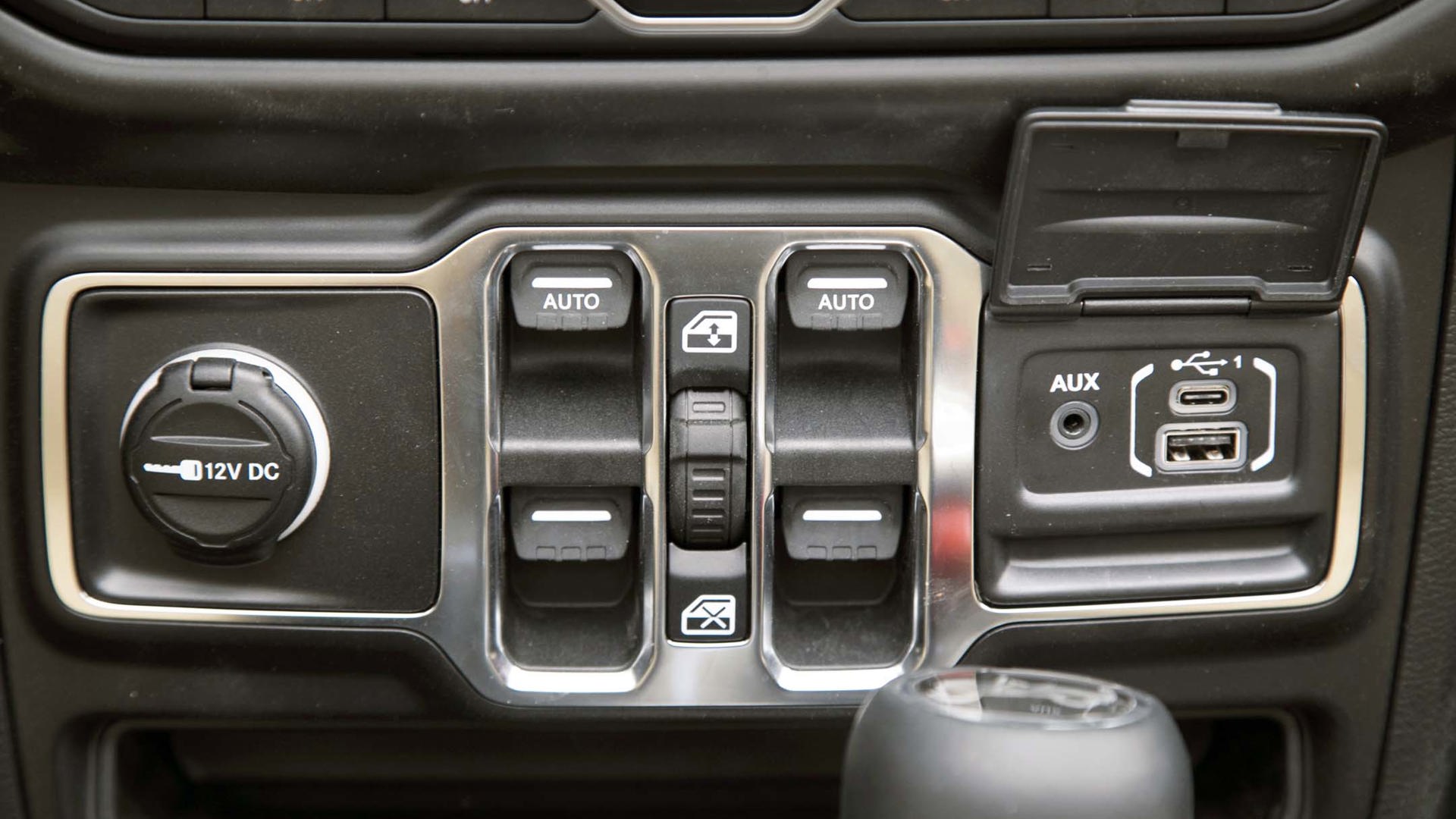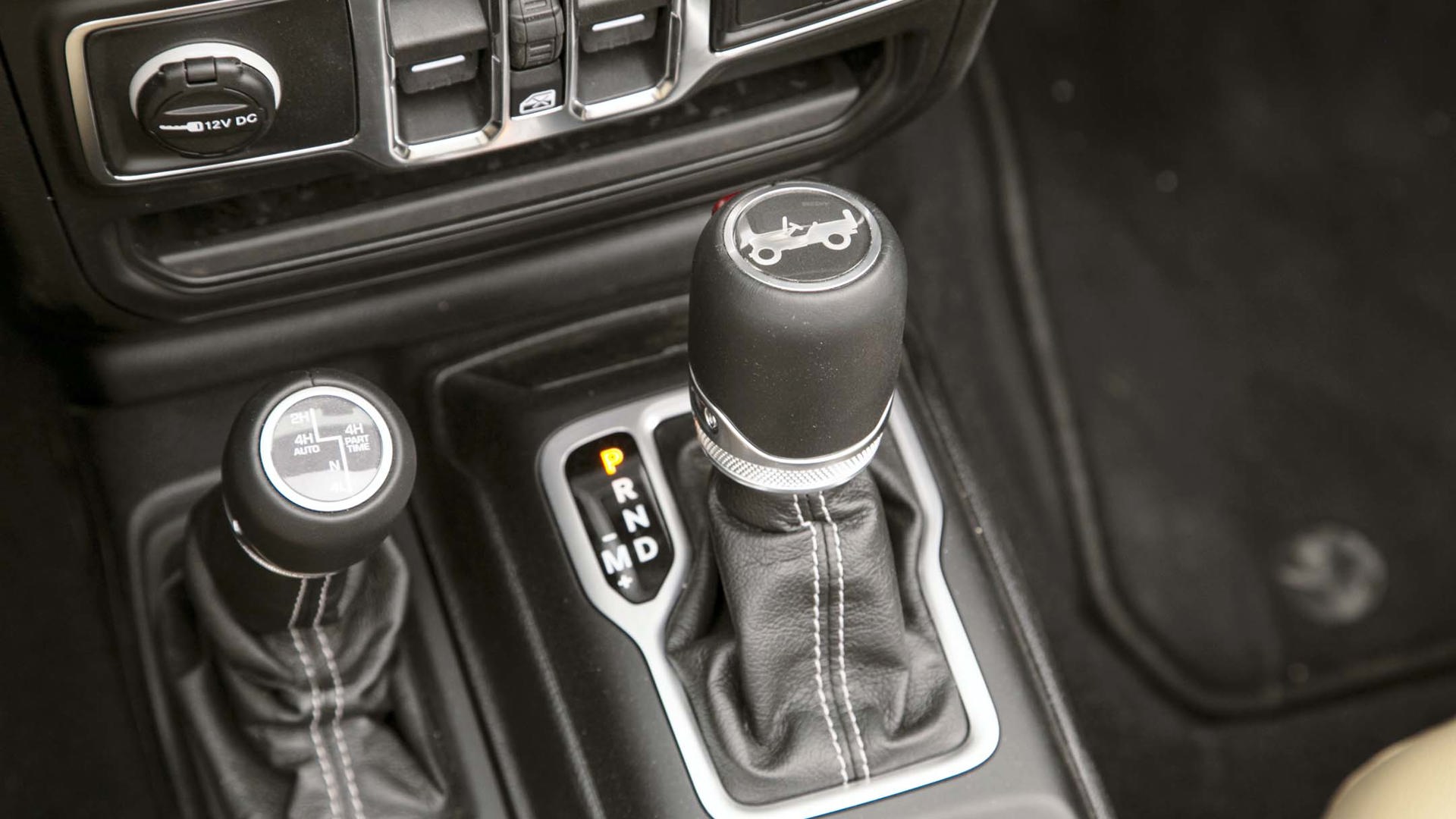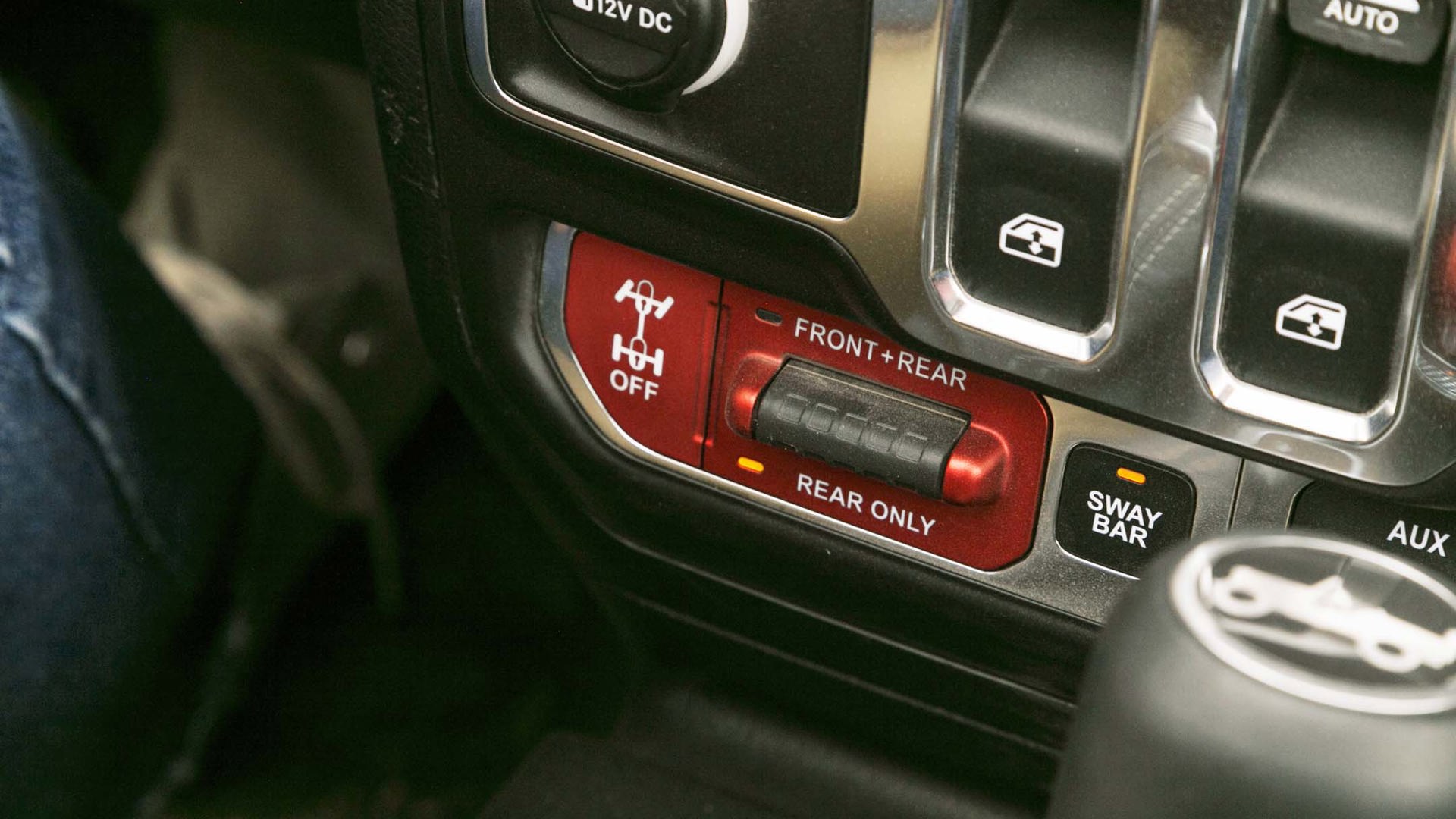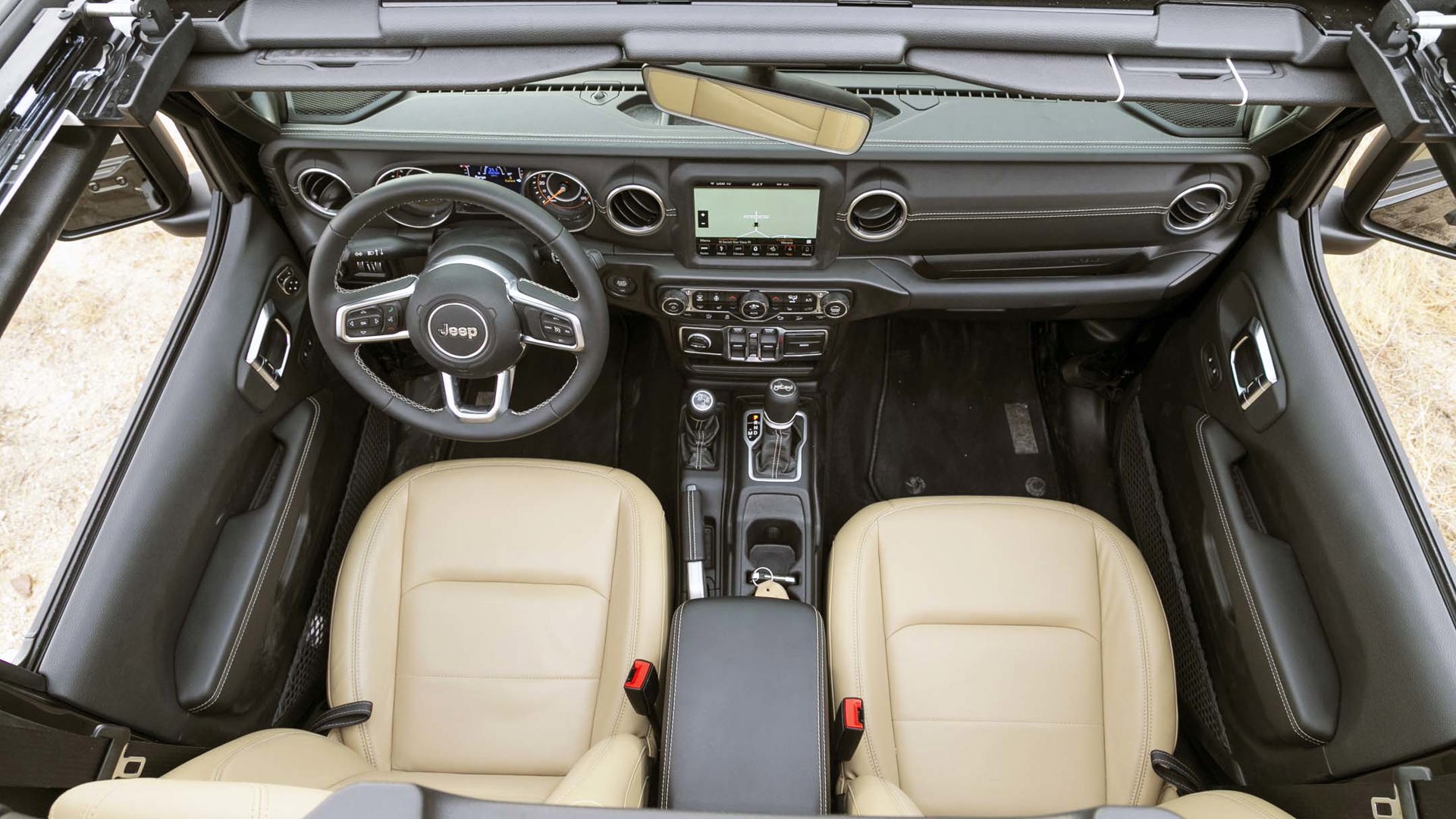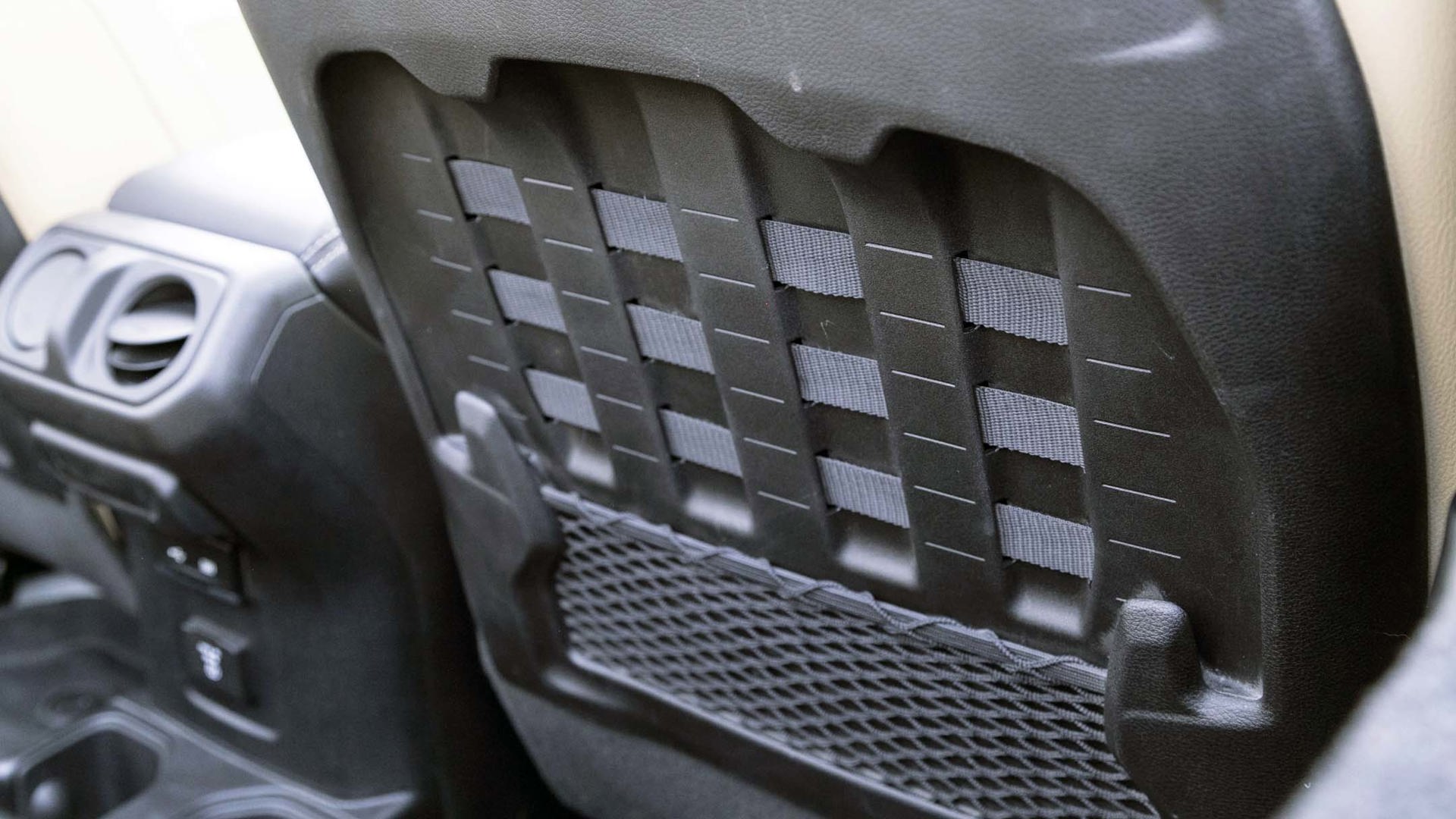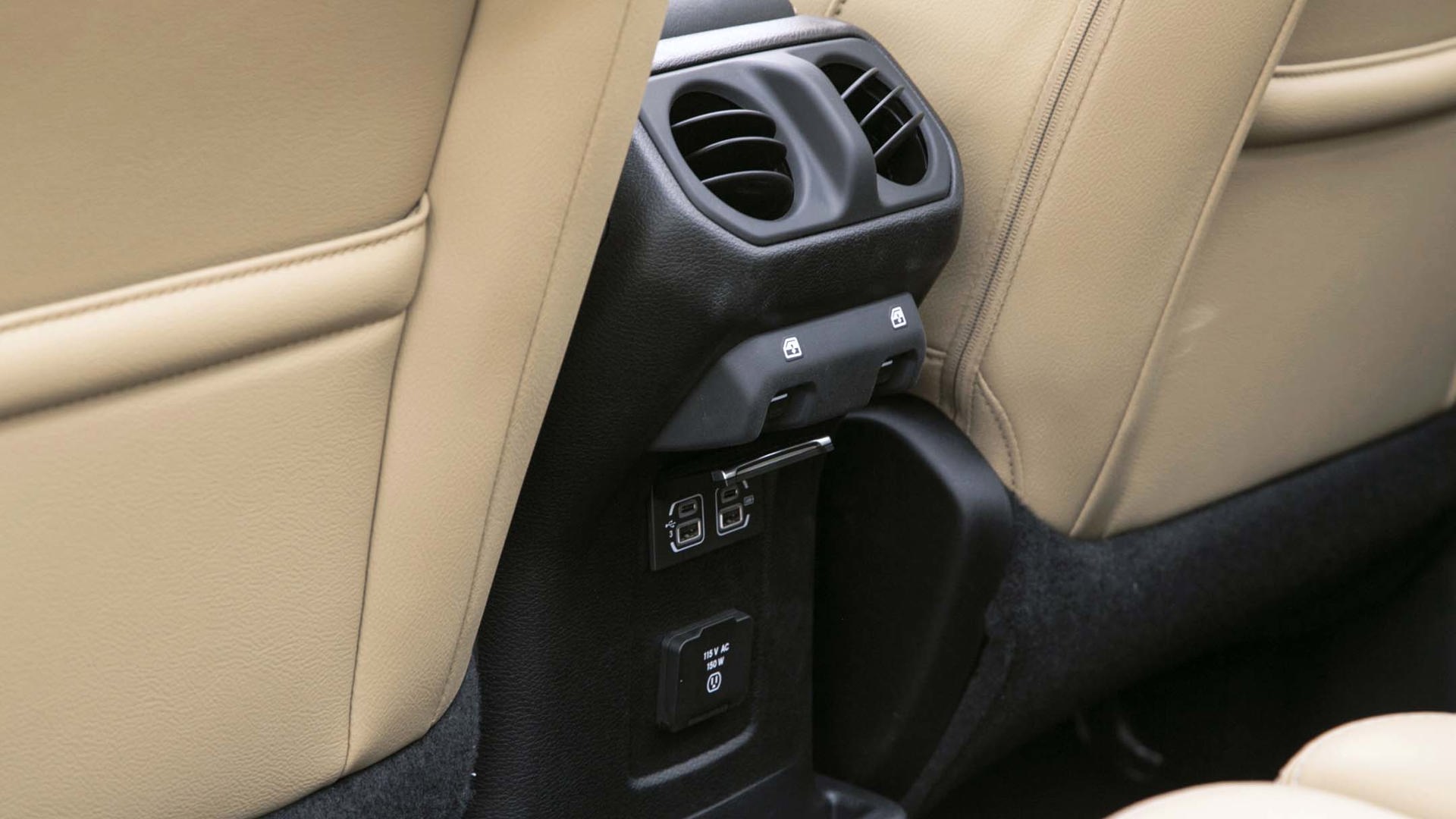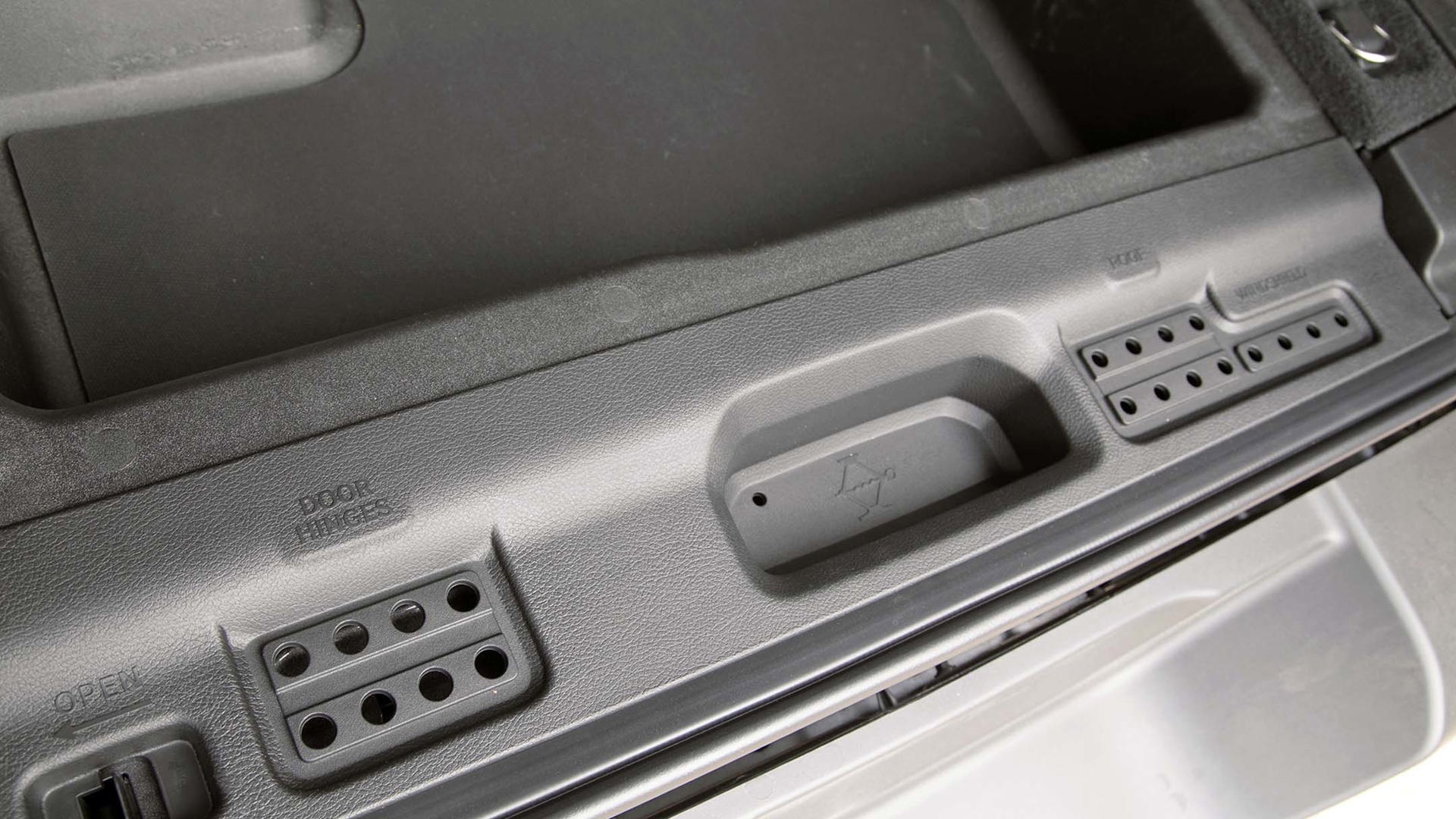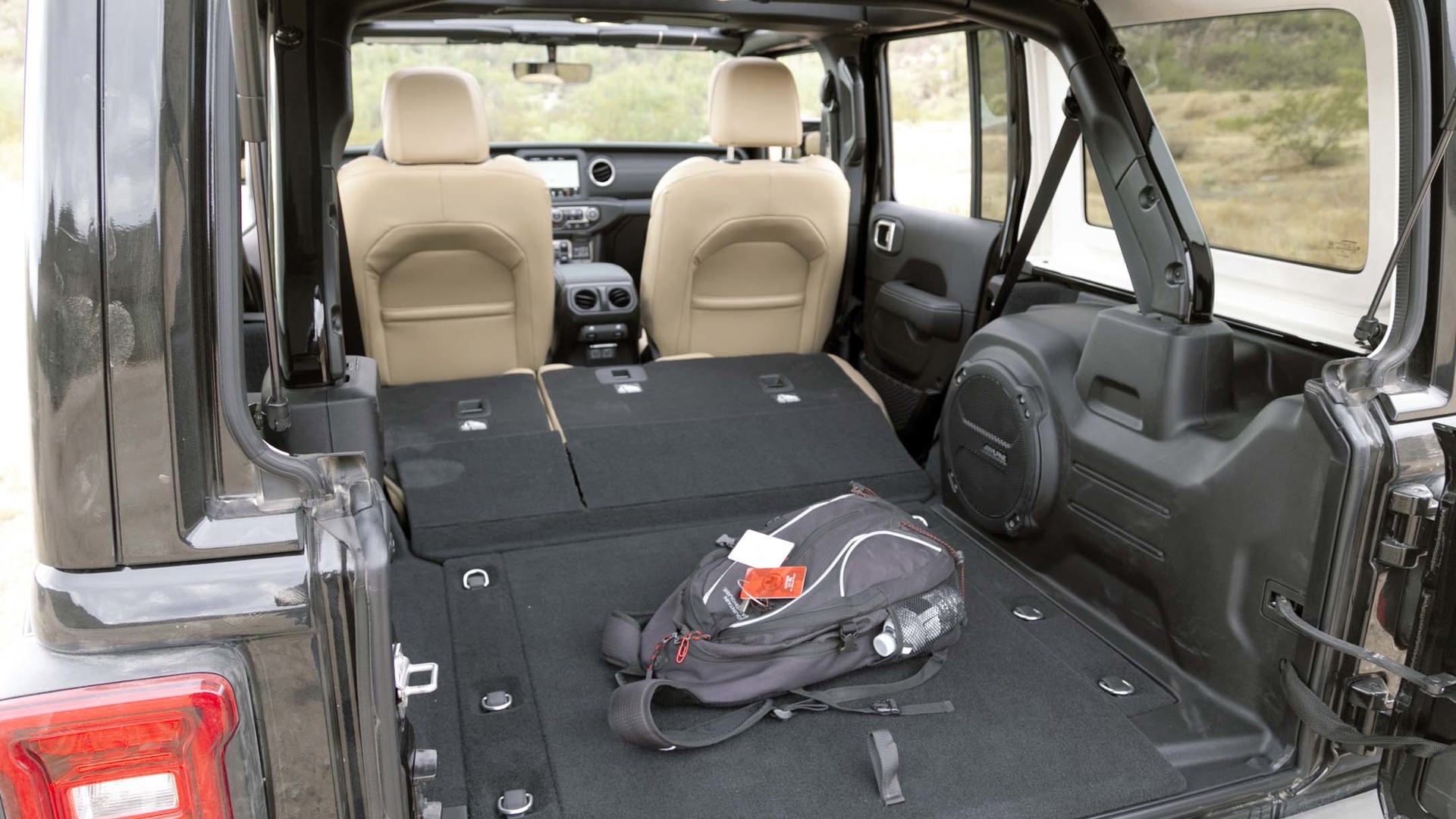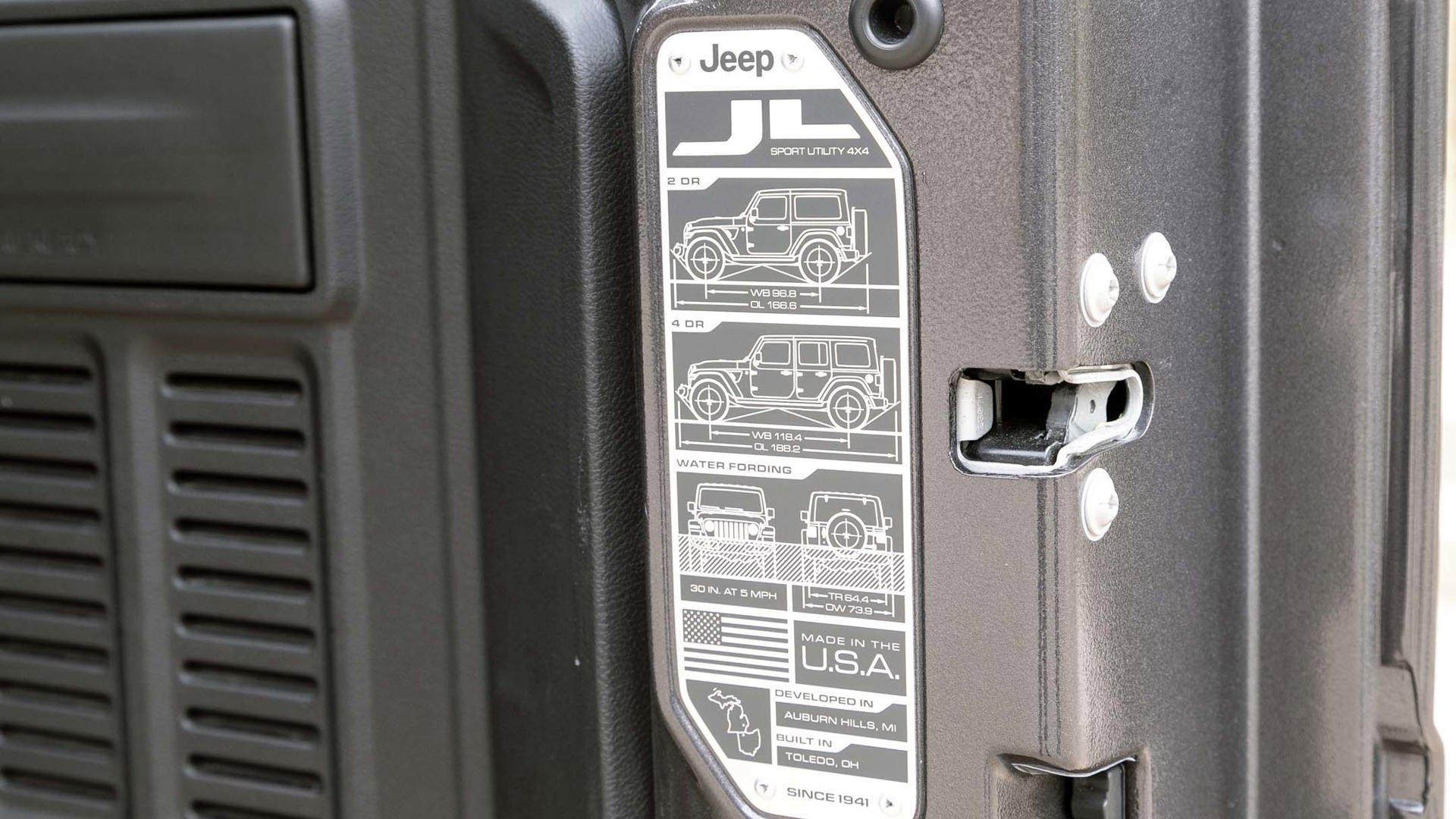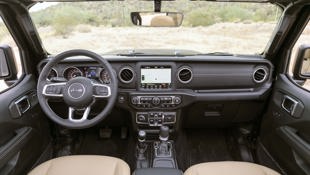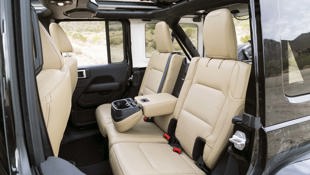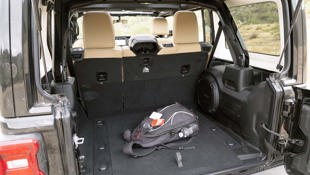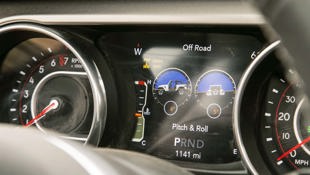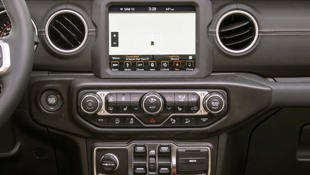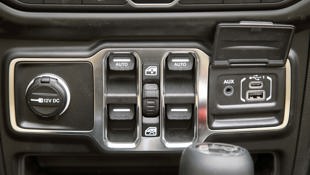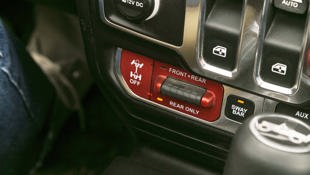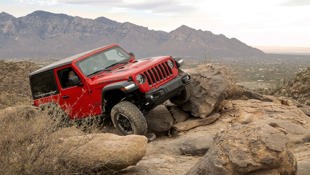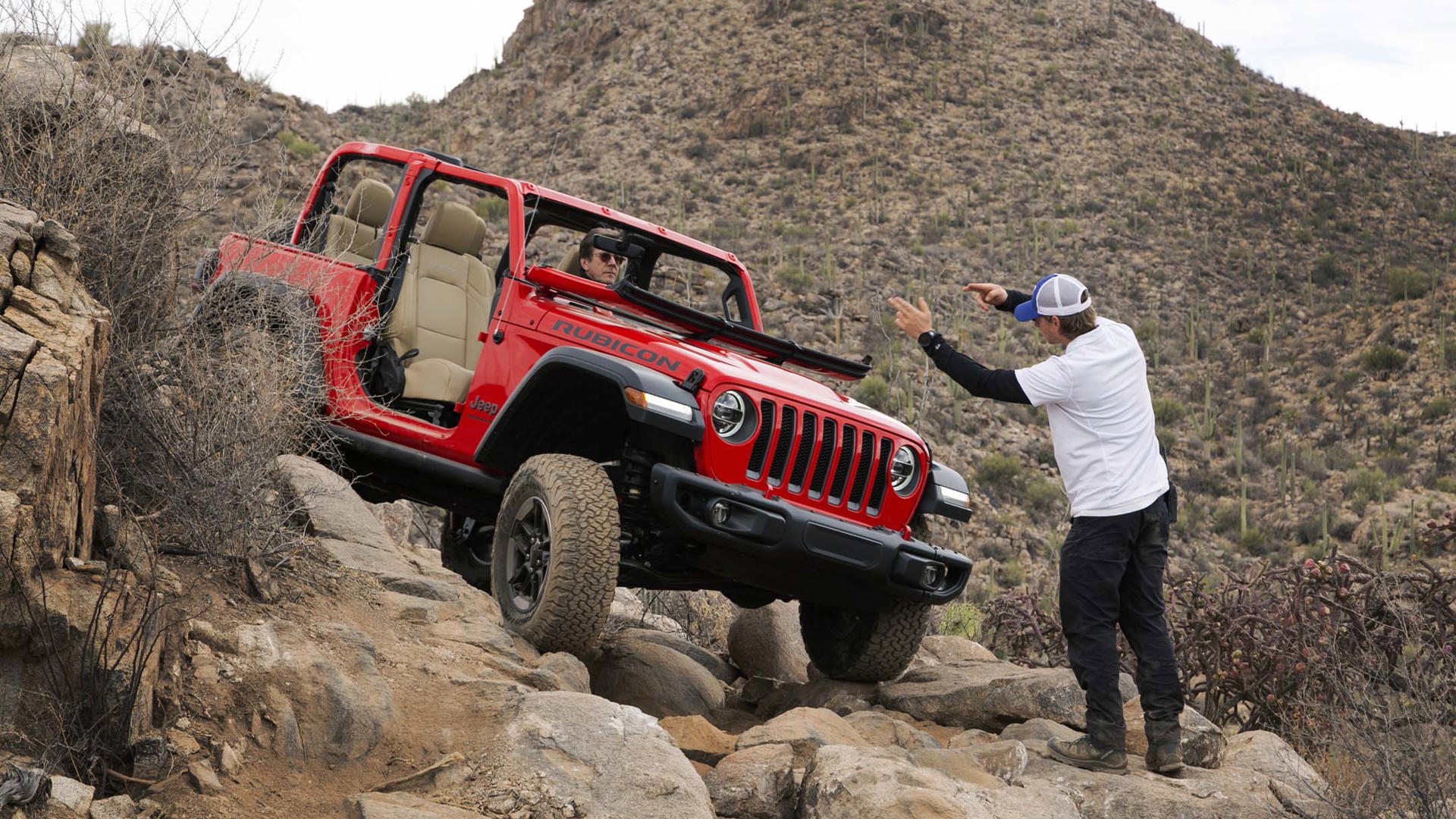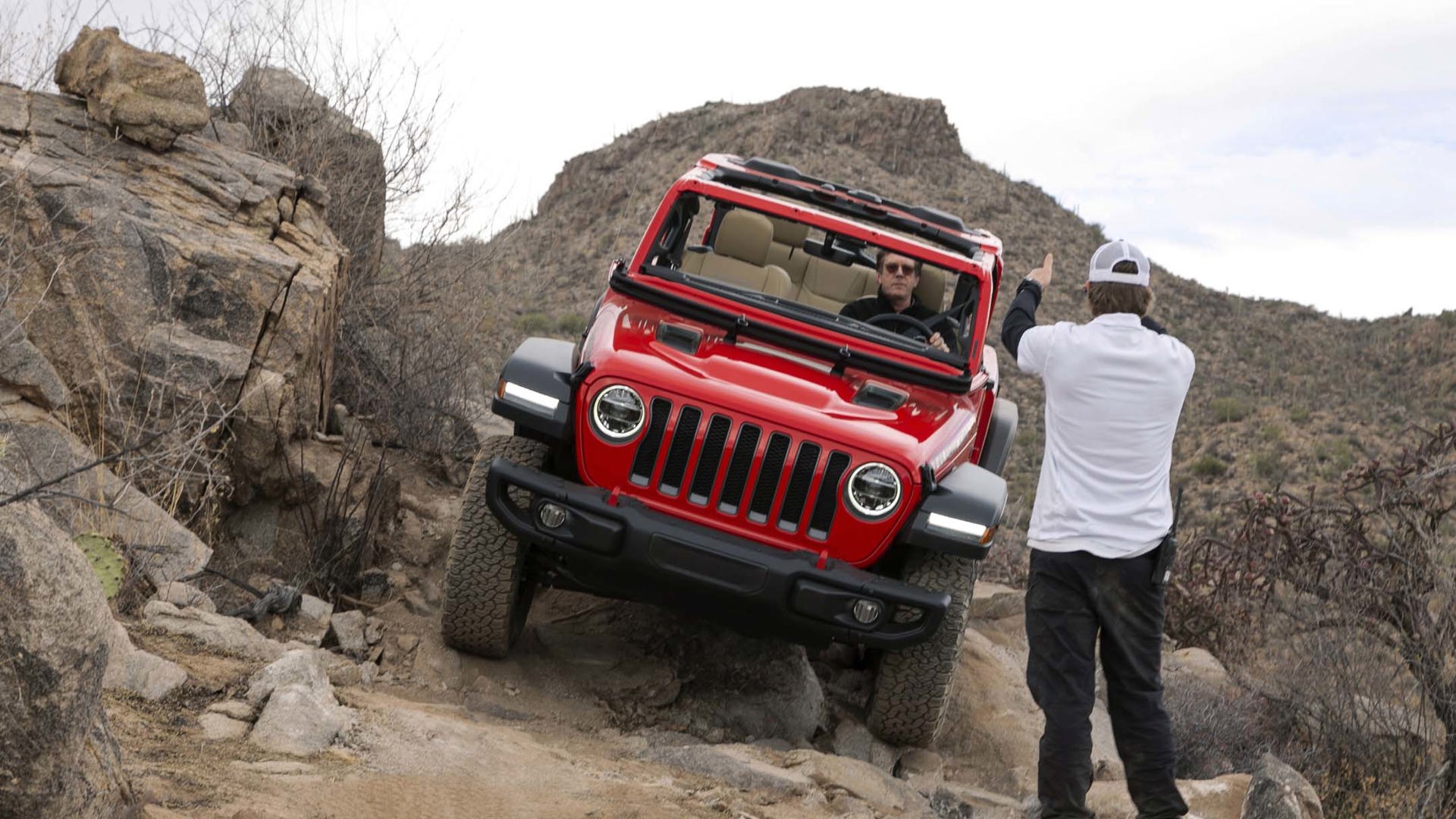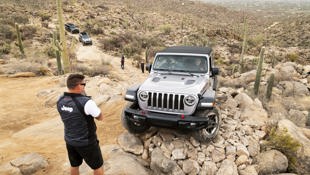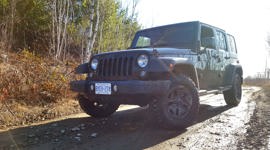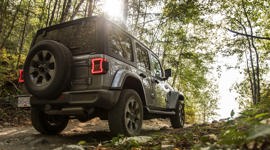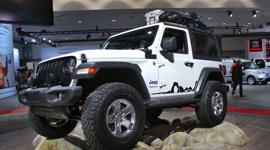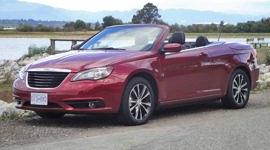The all-new, 2018 Jeep Wrangler is safer, comfier and more efficient than last year’s model, plus it’s filled with a whole lot more technology. For the countless Wrangler buyers using their Jeeps for school drop-offs, adventures to the mall, and general image enhancement, this is great news.
This all new Wrangler is like a pro sports figure who’s gone all doughy around the mid-section, right?
Wrong.
The new Wrangler is finally refined enough to make a very reasonable daily driver.
There’s another, even more passionate group of Wrangler buyers who expect their rigs to be as luxurious as an anvil, and twice as robust. For these folks, this new JL-generation Wrangler possesses some worrisome attributes that seem, on paper, to make the new Jeep a bit of a softy.
Consider the following from the spec sheet:
- The top engine choice now is a tiny, turbocharged four-cylinder, not a grunty six.
- A heated steering wheel, a power folding top, and a split-fold rear seat with armrest and cup holders, are all available
- A set-it-and-forget-it electronic, automatic four-wheel drive system is available
So that’s it then. This all new Wrangler is like a pro sports figure who’s gone all doughy around the mid-section, right?
Wrong.
With a history of unstoppable ruggedness reaching back more than 75 years, there’s no way Jeep is going to let the Wrangler JL be anything but a kick-ass off-road machine.
Outside
A Wrangler needs to look like a Wrangler, and this new Jeep makes all the right moves for evolutionary styling of one of the world’s most iconic brands. From the shape of the seven-bar grille, to its integration with the round headlights, to look of the taillights and the rig’s overall profile, the new Wrangler is definitely a proper Jeep.
The original government work order for the General Purpose (or GP) vehicle specified a foldable windshield, and the Wrangler (and earlier TJ, YJ, and CJs) have always had this function. But it’s not always been easy. The JK generation required the removal of 28 bolts to drop the windshield; the new JL needs just four bolts to get the job done – though after driving around like that for a bit, I’m not really sure why you’d want to.
The doors still come off as well, but now they’re lighter aluminum and have a built-in carrying handle to make doing so easier. And when it comes time to put them back on, that task is easier too thanks to unequal-length door hinge pins.
The new Sky One-Touch power top slides back at the touch of a button. Al fresco driving has never been simpler in a Jeep, but for traditionalists, updated versions of the hardtop and softtop offerings are still available. The latter has been made significantly easier since all zippers have been banished and instead, the fabric panels slide on and off with a simple rail system.
Inside
Canadians will be able to order a Wrangler in either two-door or four-door Unlimited format as before, and in varying trims to suit a broader scope of buyers’ needs. The majority (70 percent) will go for four-doors, and they can get a bare-bones Sport S model, a plush Sahara, or a tough-as-nails Rubicon depending on just how hardcore they want their Jeep to be.
Two-door buyers tend to be more serious with their off-roading since the shorter wheelbase is more manoeuvrable and provides a better break-over angle, so the middle-ground two-door Sahara is replaced by a stripped-down Sport model for buyers who want to build up their own off-road machine, or those just looking for the most affordable Wrangler possible.
All JL Wranglers feature improved materials, but the loaded-up Sahara I drove featured supple leather with contrasting stitching, plenty of soft touch plastics and switchgear with real metal and rubber finishes. It’s a significant step beyond the outgoing JK models in terms of refinement and quality, for sure.
In order to accommodate the new eight-speed automatic transmission, both two-door and four-door Wranglers have been lengthened in wheelbase. This additional space has added a little over 3 cm of rear passenger space, and I found rear legroom, even in the two-door Wrangler, to be adequate for my 5'9" frame.
Greater window area creates better visibility, especially to the rear where the hardtop’s rear window is not only bigger, but helped further by the wiper being repositioned to the bottom of the glass. Plus, the spare tire is mounted lower on the tailgate (yet able to accommodate up to a 35" tire size).
Technology
Jeep’s Uconnect infotainment system has been widely celebrated for the past few years as being one of the most intuitive systems on the market. The latest Uconnect found in the Wrangler has an operating speed four times faster than last year’s model. The Sport models come with a 5.0-inch screen, while a 7.0-inch screen is standard on Sahara and Rubicon models. An 8.4-inch screen with navigation is optional on upper trim machines, but both 7.0- and 8.4-inch systems incorporate Apple CarPlay and Android Auto smartphone connectivity.
There are several regular USB and smaller USB-C ports, and on upper trim levels, a 115V auxiliary power outlet is found in the rear seat area. Units fitted with the 8.4-inch screen will also have a subscription-based 4G LTE Wi-Fi hotspot functionality available too, and there are several auxiliary switches ready to accommodate accessories like light bars.
The instrument cluster features an available, second 7.0-inch TFT screen that can be customized to depict everything from audio and navigation information, to pitch and roll graphics for off-roading. While ergonomically, there’s never been a more user-friendly and informative Wrangler, the top of the TFT screen was cut off from my line of sight, even with the seat lowered as much as possible. Plus, the strapping that prevents the door from swinging wide, presses into the driver’s left leg.
To further aid in backing up, the rear-view camera is cleverly mounted in the spare wheel hub and the Wrangler can now be ordered with blind-spot monitoring and rear cross-path detection.
On-Road
All of the technology and finery now offered in the Wrangler will help to coddle passengers and keep them safe, but it’s the improved driving experience that will be felt by most owners on a daily basis. On the road, the elevated levels of refinement become clear with the JL’s improved ride and handling, as well as new and improved drivetrains.
The suspension has been reworked across all Wranglers to provide better on-road manners with considerably less body roll. We hustled a four-door Wrangler around some of the twisting (and ribbon-smooth) tarmac near Tucson, Arizona and found the Sahara to manage itself surprisingly well with its 18-inch, road-friendly tires.
That said, the mass of that body-on-frame structure, plus those robust 4x4 mechanicals are always apparent, despite 200 lb of weight-loss from the four-door Wrangler. Steering is sharper than on previous-gen JK Wranglers, but this is still a machine that needs to be able to take a serious pounding off-road, and have slow ratio steering, so it’s never going to feel light on its feet.
Brake feel is improved, too, and when hauling the Jeep down from elevated highway speeds, the Wrangler doesn’t have the scary dive and wallow the way earlier generations did.
Under the Hood
The Wrangler’s powertrain has seen some big changes as well. The 3.6L Pentastar V6 – a well-proven engine successfully utilized across much of the FCA family – is the standard engine now fitted to either a revised six-speed manual with throws 50 percent shorter than before, or a new eight-speed automatic.
A 3.0L EcoDiesel V6 mated only to the eight-speed automatic, will become available in four-door models in 2019.
The engine to have now is the optional 2.0L turbocharged inline-four, with the eight-speed automatic. At 270 hp, the turbo four produces 15 fewer horsepower than the Pentastar, but delivers 35 lb-ft more torque and at lower revs.
We were skeptical going into our drive that the little four-banger would be a good fit for the Wrangler, but it’s a smooth and quiet engine that is exceptionally well-matched to the eight-speed gearbox. It provides the Jeep with plenty of motivation, and, like the V6, is rated for 1,500 kg (3,500 lb) of towing.
The transmissions and the implementation of auto stop-start function, should make for notable improvements in fuel efficiency across the board compared to last year’s Wrangler, however, final government fuel average numbers have yet to be released.
Off-Road
Every Wrangler meets the necessary criteria for Traction, Ground Clearance, Manoeuvrability, Articulation, and Water Fording to earn its Trail Rated badge.
For the JL Wrangler, the underbody packaging has been improved, netting nearly a full inch of better ground clearance. There’s now up to 76 cm of water-fording capability, stronger rock rails than before and even though the new Wrangler is longer, it has tighter turn circles for each the two-door and four-door variations. And of course, owners can still take a hose to the interior, even with all the fancy screens tech gadgets.
New this year, the Sahara’s Selec-Trac two-speed transfer case offers full-time four-wheel-drive mode for drivers who’d just like to set it and forget it.
But the Rubicon takes off-road capability to Jeep’s highest level. With next-generation, heavy-duty Dana 44 front and rear axles, plus Trac-Lok lockable differentials, limited slip, and an electronically disconnected front sway bar, the Rubicon is able to put power down over pretty extreme terrain.
The Rubicon now wears standard 33-inch BF Goodrich T/A KO2 all-terrain tires that are better-suited for a wider-range of off-road scenarios than last year’s standard mud tires. The fender flares are two inches higher than the Sahara in order to easily accommodate 35-inchers.
After driving several kilometres into the rugged desert Arizona mountains, I came to the real off-road test for our test machines: a gnarly and tight rock-crawling course that my peers and I agreed was the most technical and challenging off-roading we have ever experienced.
The Rubicons – both two-door and four-door versions – would slowly crawl all through the course, time and again, one after another, driven by media-folk with sometimes-questionable experience (or inability to follow the direction of the trail guides and spotters), no Wranglers appeared any worse for wear.
The Rubicon’s manual transmission now affords an amazing 84.2:1 crawl ratio, while the auto serves up a 77.2:1 ratio.
There are plenty of heavily modified machines that can do simply astonishing off-road feats, but I can’t think of another new machine on the market that combines the clearance, traction, and manoeuverability of the Rubicon. And in talking to the trail guides on hand, they unanimously agreed that the new Rubicon can easily tackle terrain that caused the JK Rubicon to struggle.
Conclusion
The character divide between the Sahara and Rubicon trims has grown significantly greater for the new Wrangler JL. The Sahara trim achieves new levels of refinement and comfort never before experienced in a Wrangler, which will surely make them even more appealing to buyers who want a Jeep mostly for its image.
The Rubicon’s improvement for off-road capability versus the JK cements the Wrangler’s role as the ultimate factory-direct, off-road machine.
The 2018 Jeep Wrangler JL might be more refined and much easier to live with, but it’s still unquestionably a true Jeep. Not only that, the improvements made to the Wrangler JL – whether for comfort, safety or capability – make it the best Wrangler yet.
Pricing: 2018 Jeep Wrangler (JL)
Two-Door
Sport: $33,945
Sport S: $37,895
Rubicon: $46,345
Four-Door Unlimited
Sport S: $41,745
Sahara: $45,745
Rubicon: $48,745
Powertrains
Standard Engine: 3.6-litre Pentastar V6
Transmission: six-speed manual, optional eight-speed automatic
Horsepower: 285 hp
Torque: 260 lb-ft
Optional Engine: 2.0-litre turbocharged I4
Transmission: eight-speed automatic
Horsepower: 270 hp
Torque: 295 lb-ft
